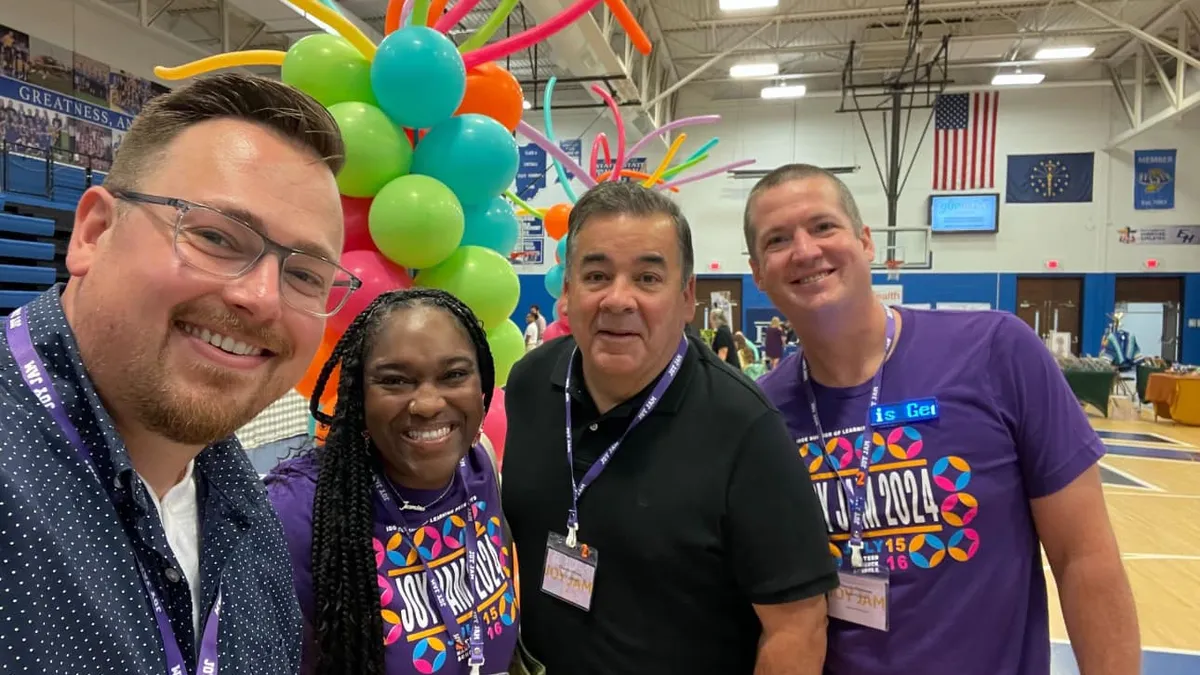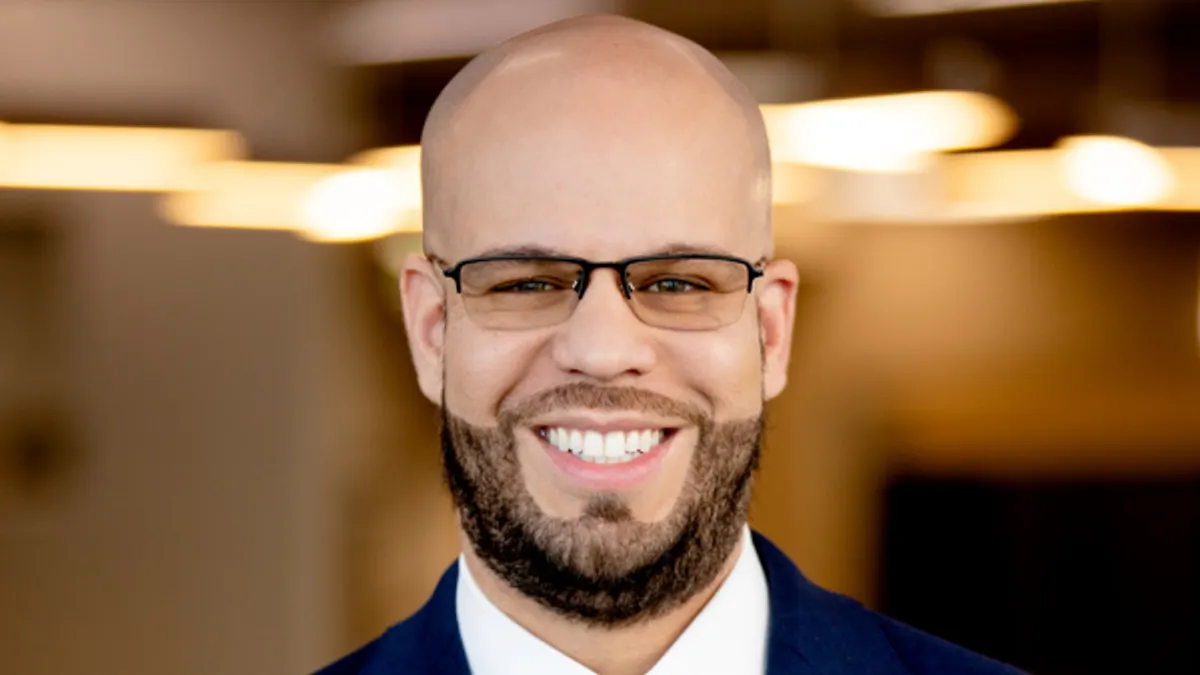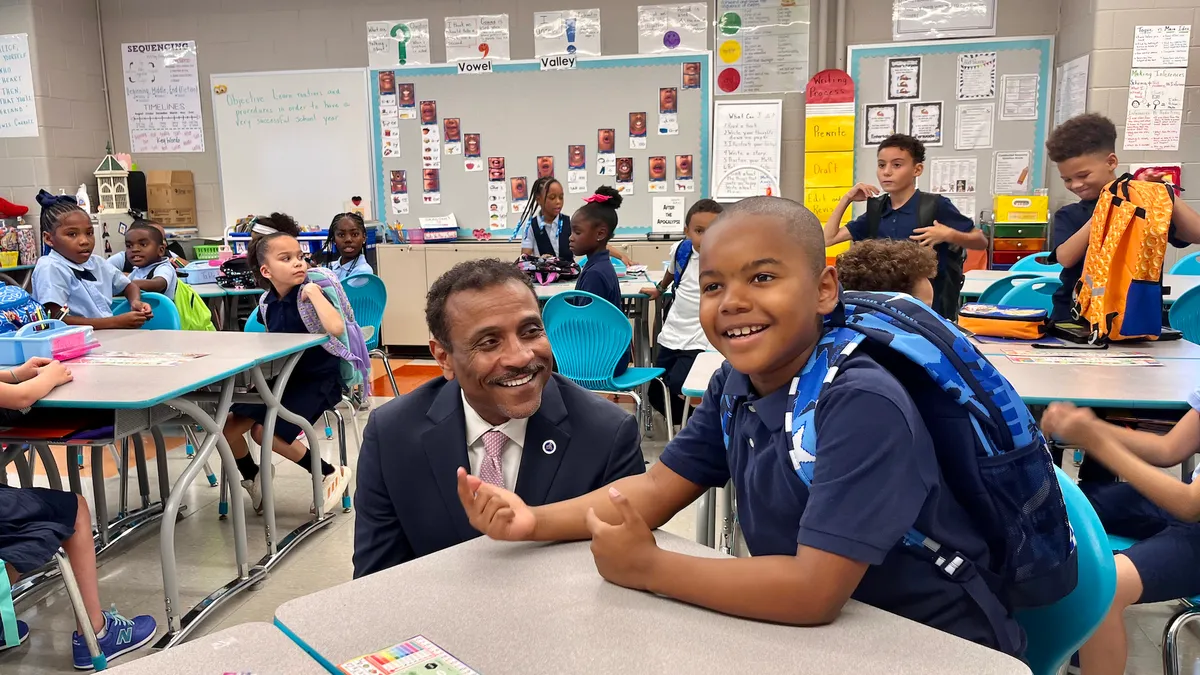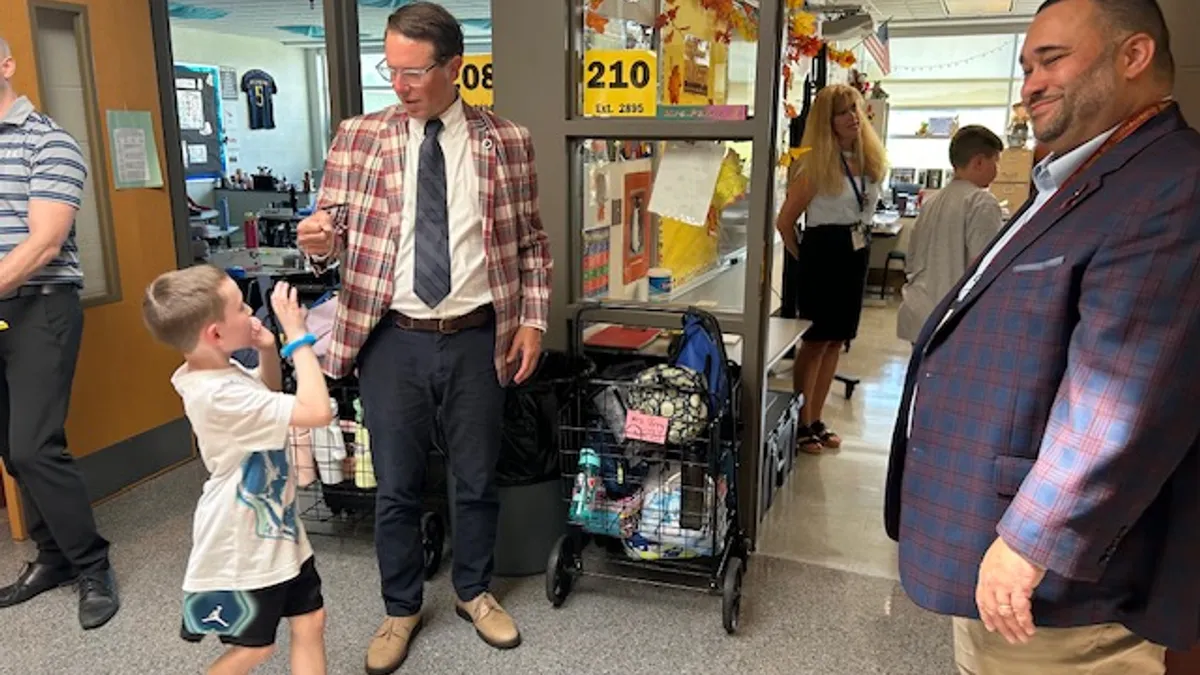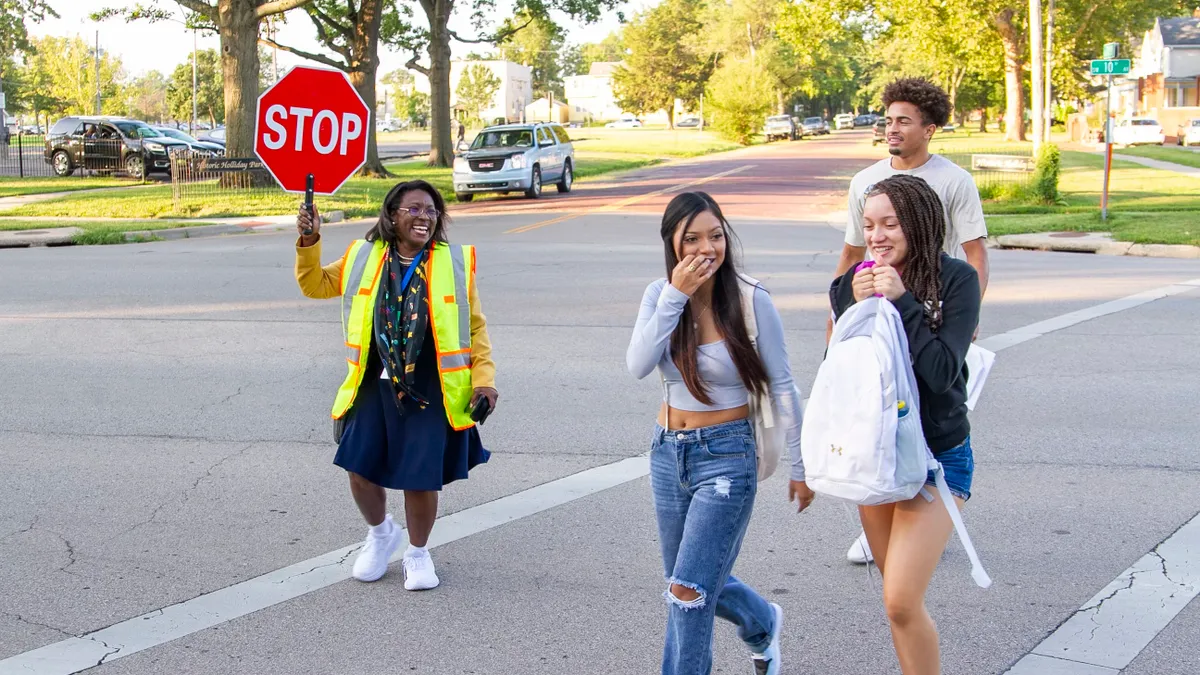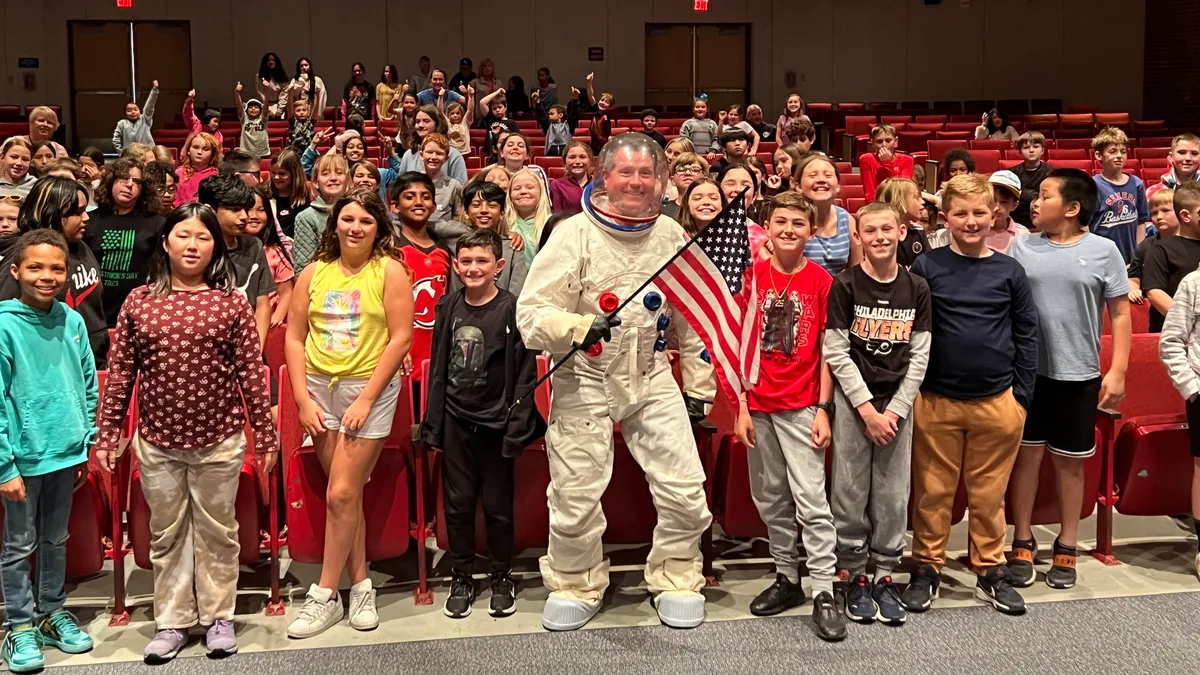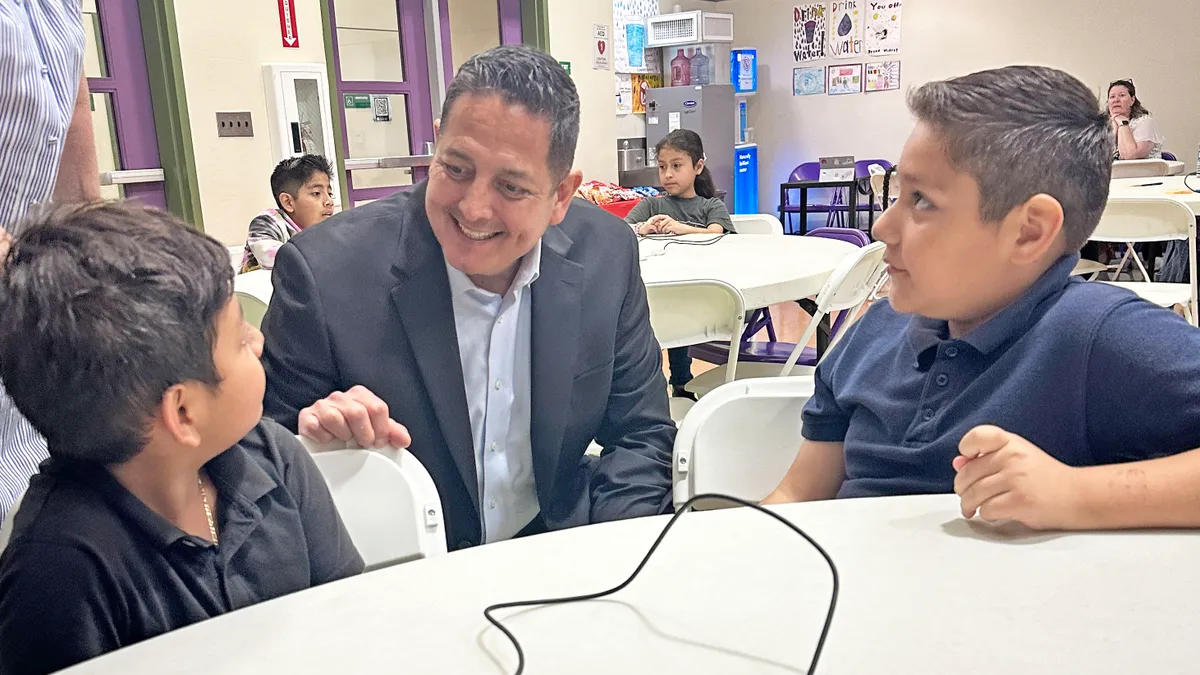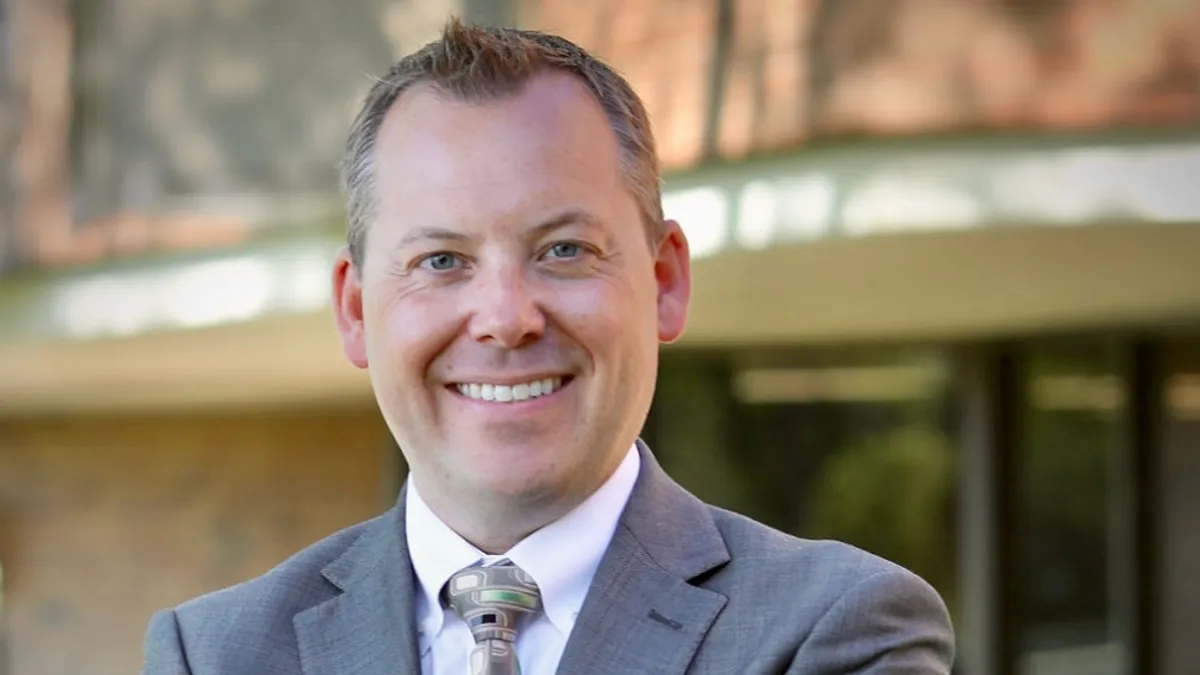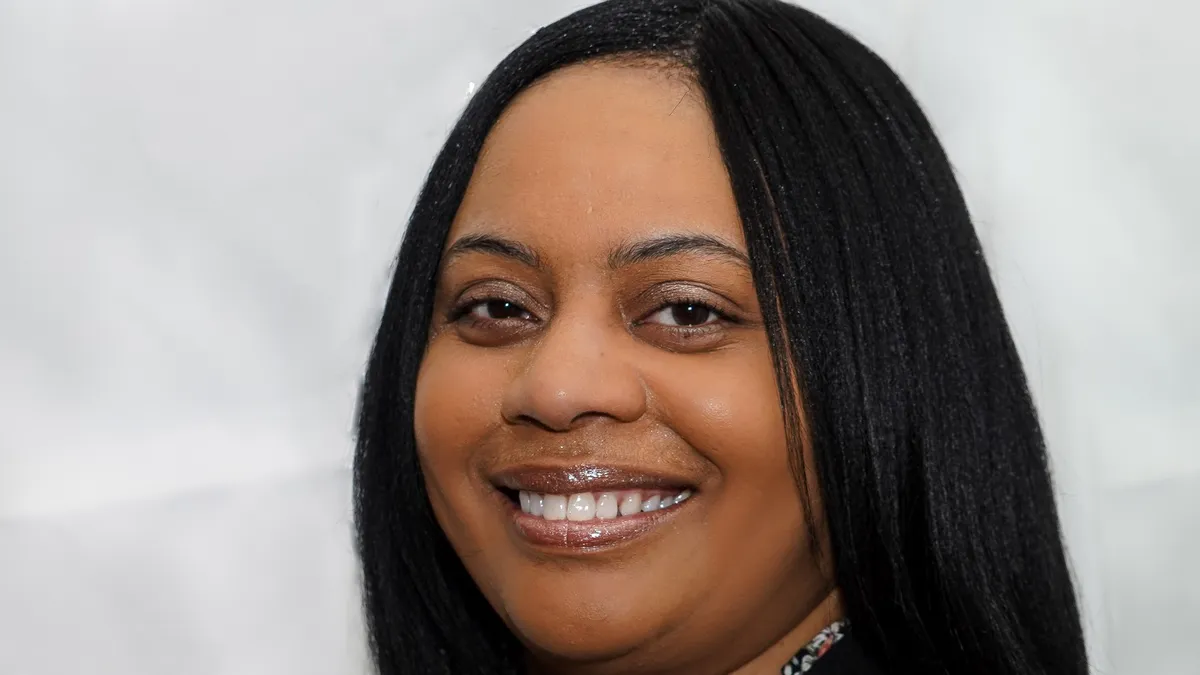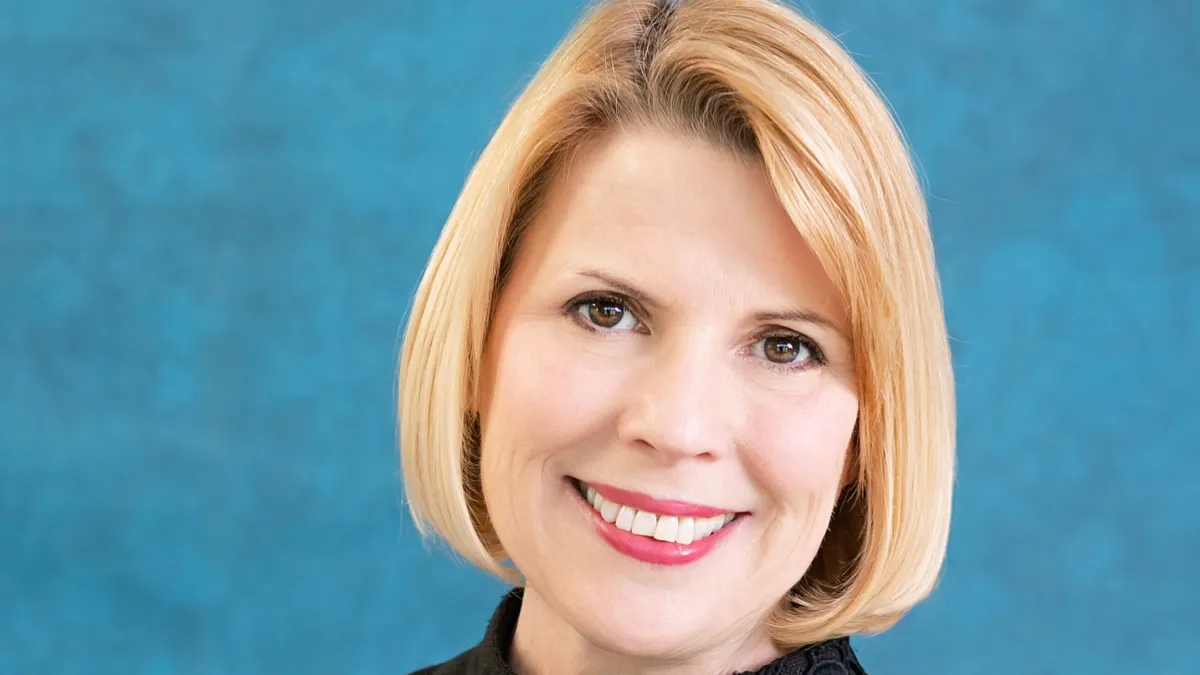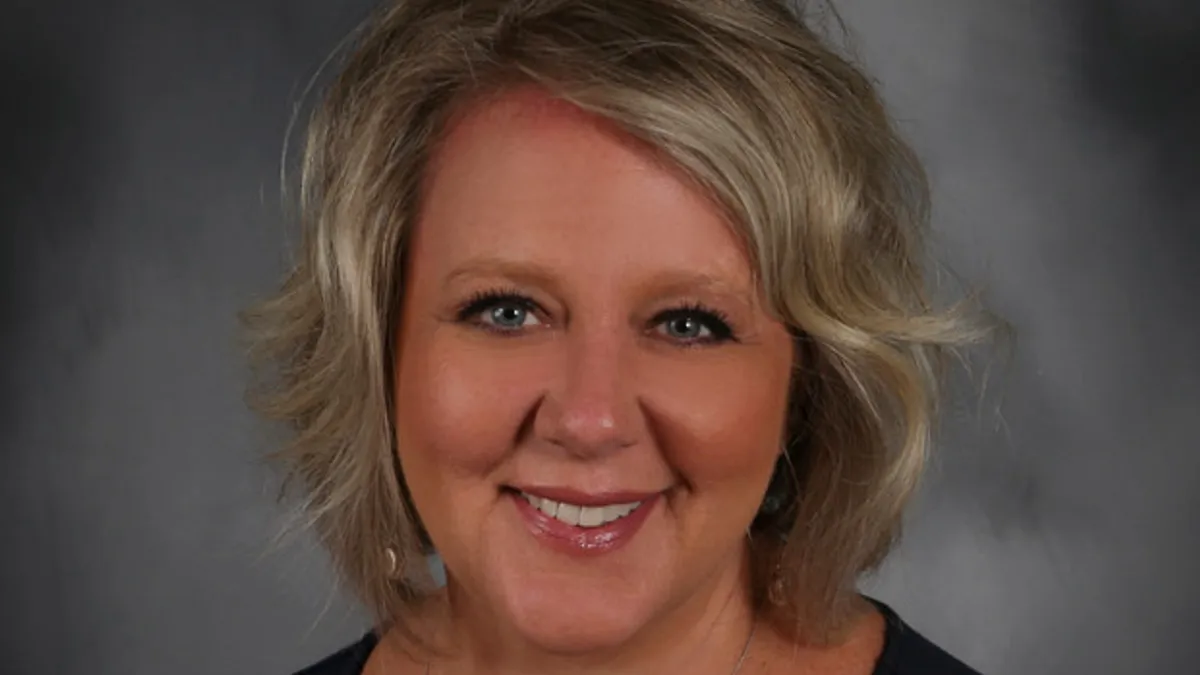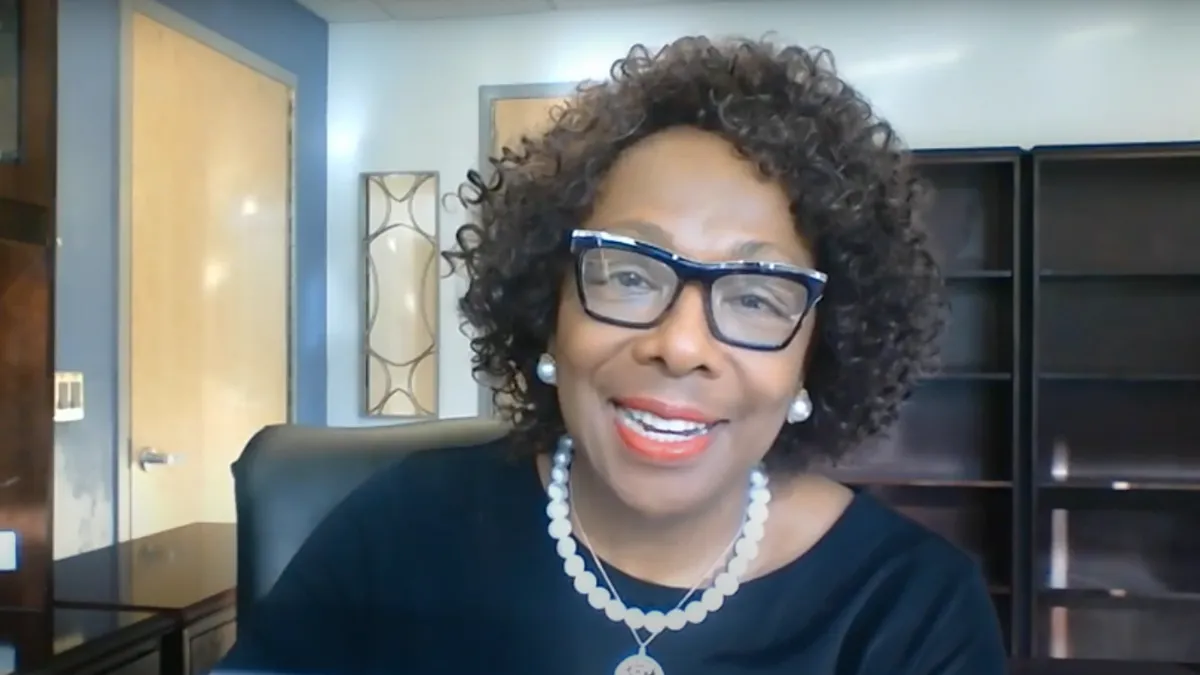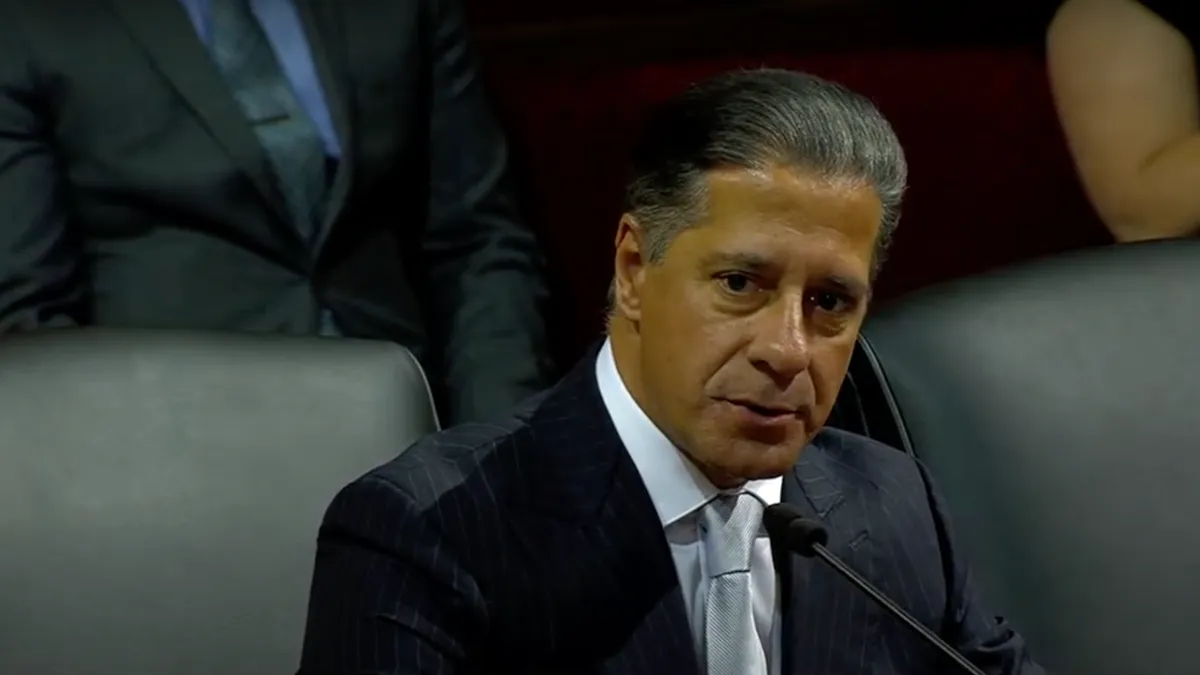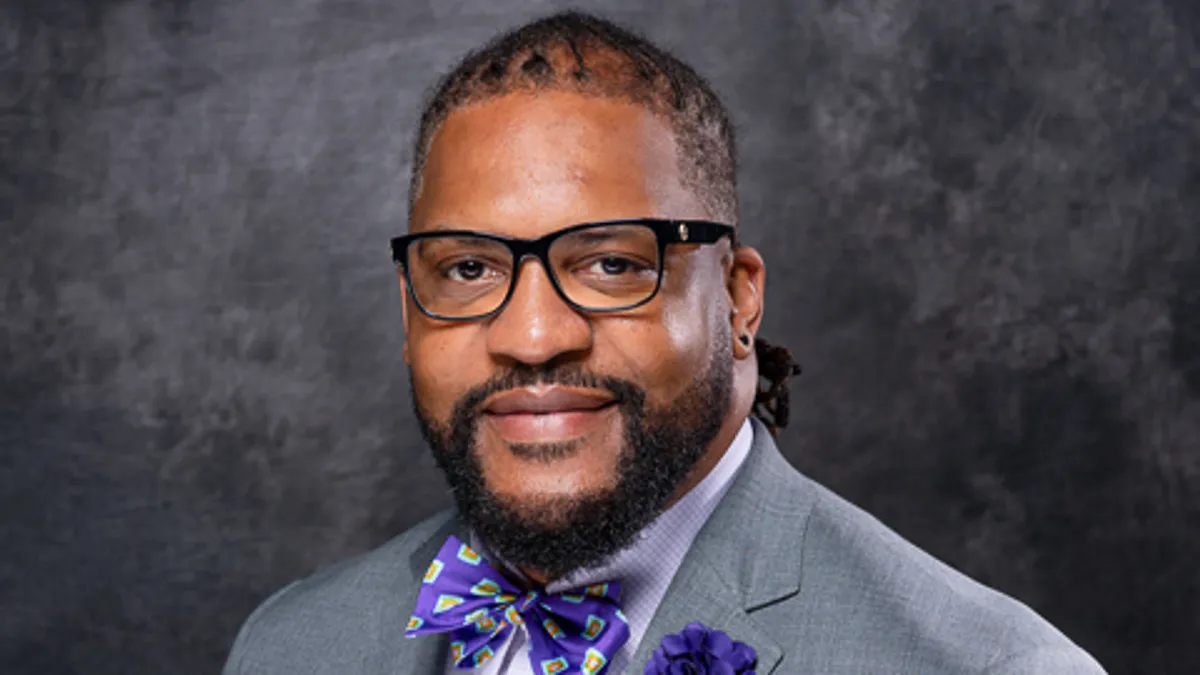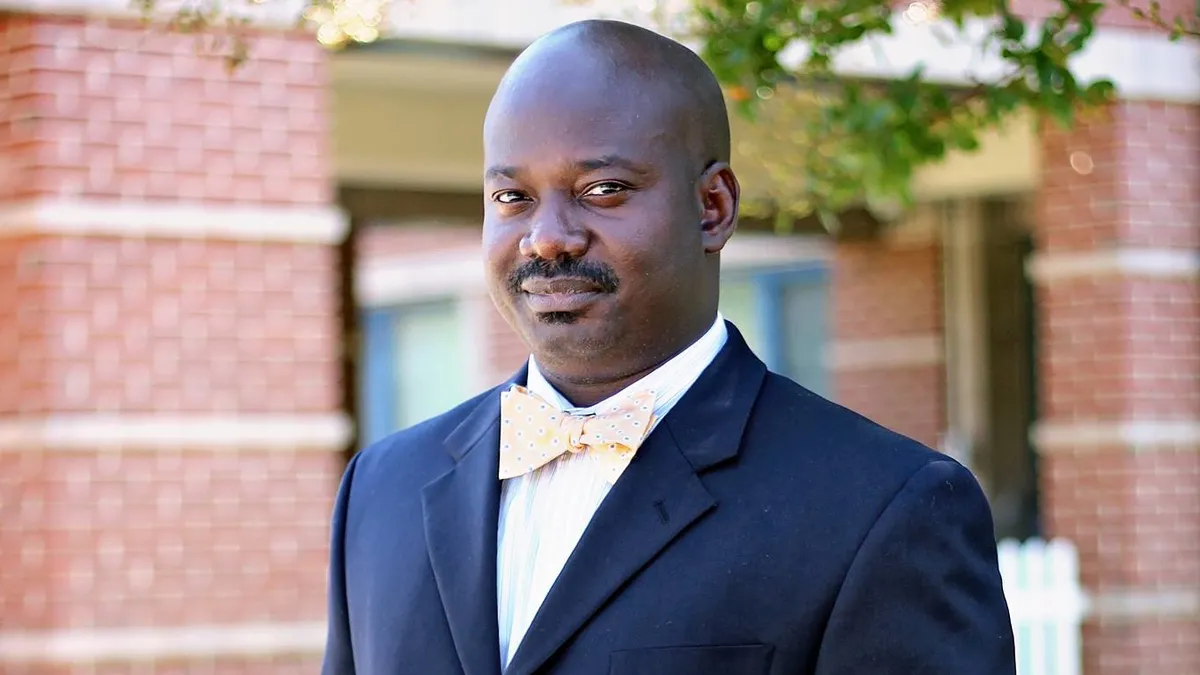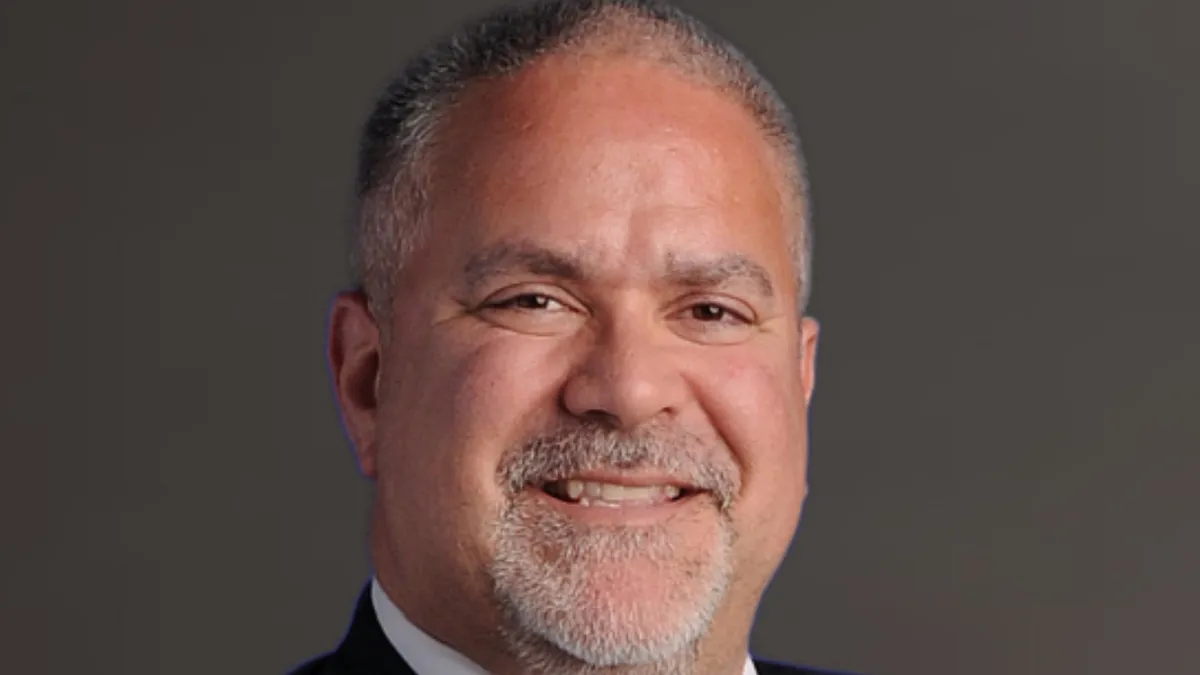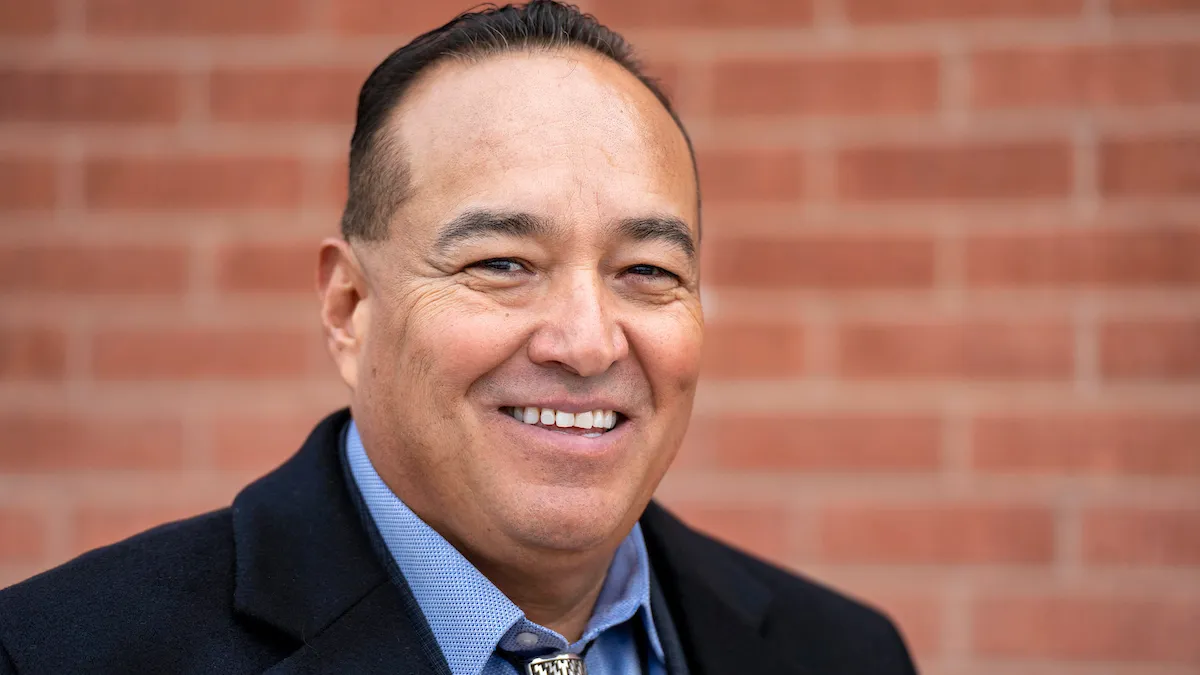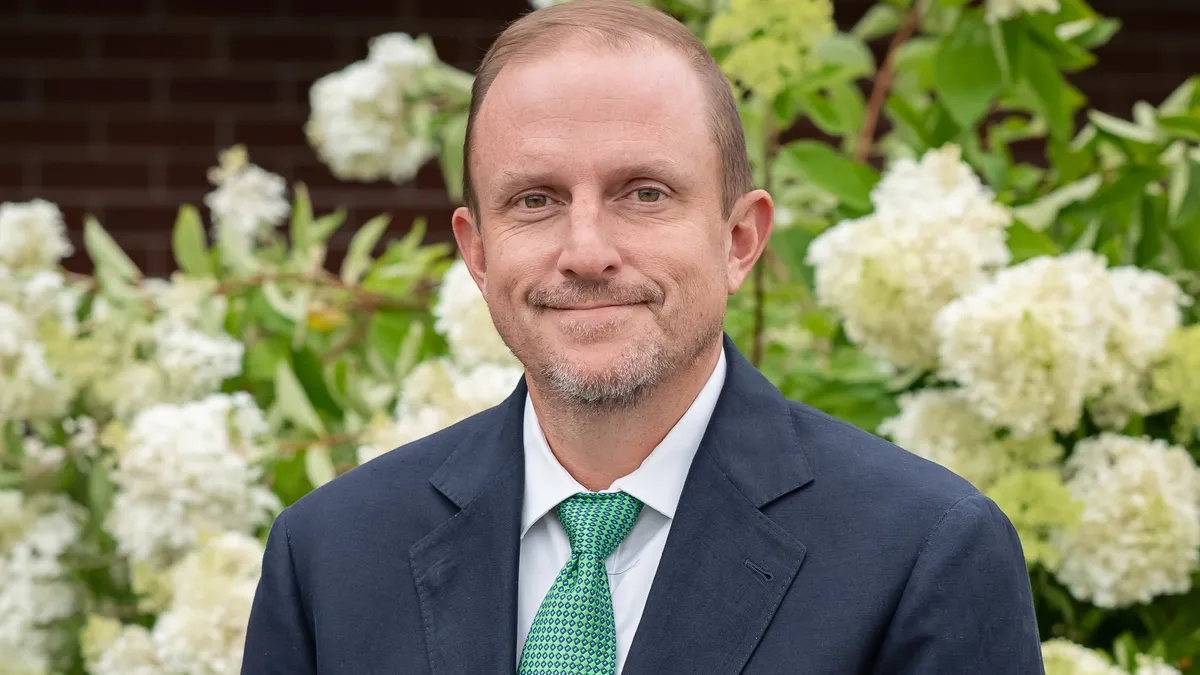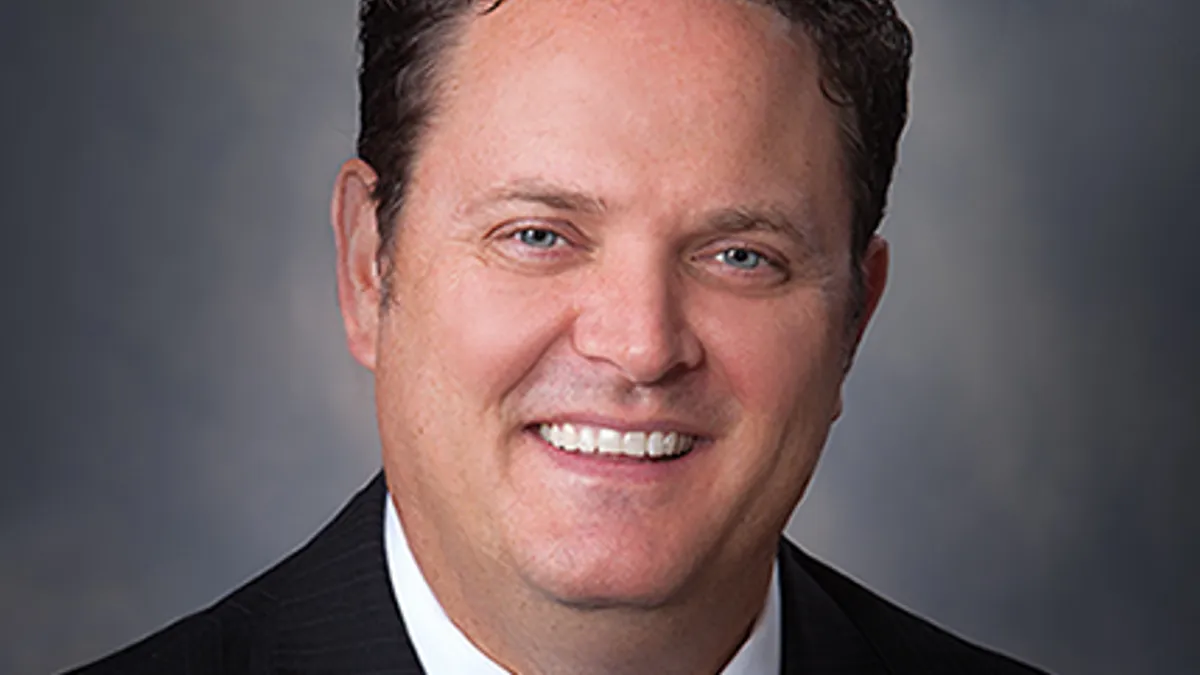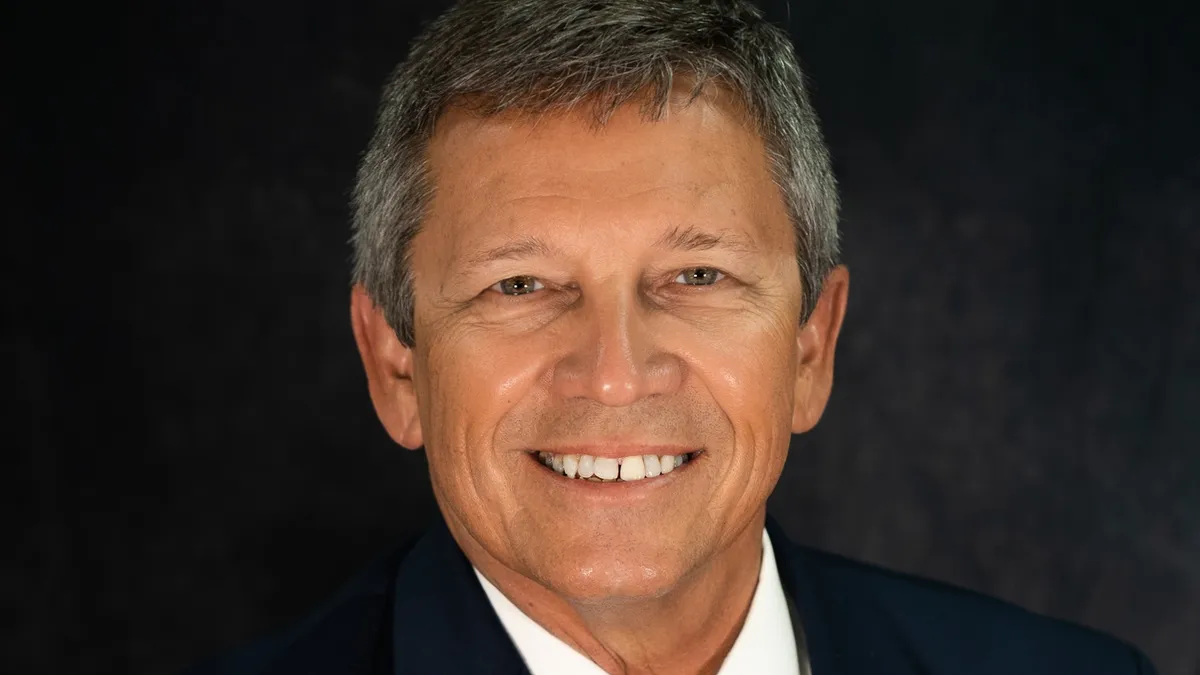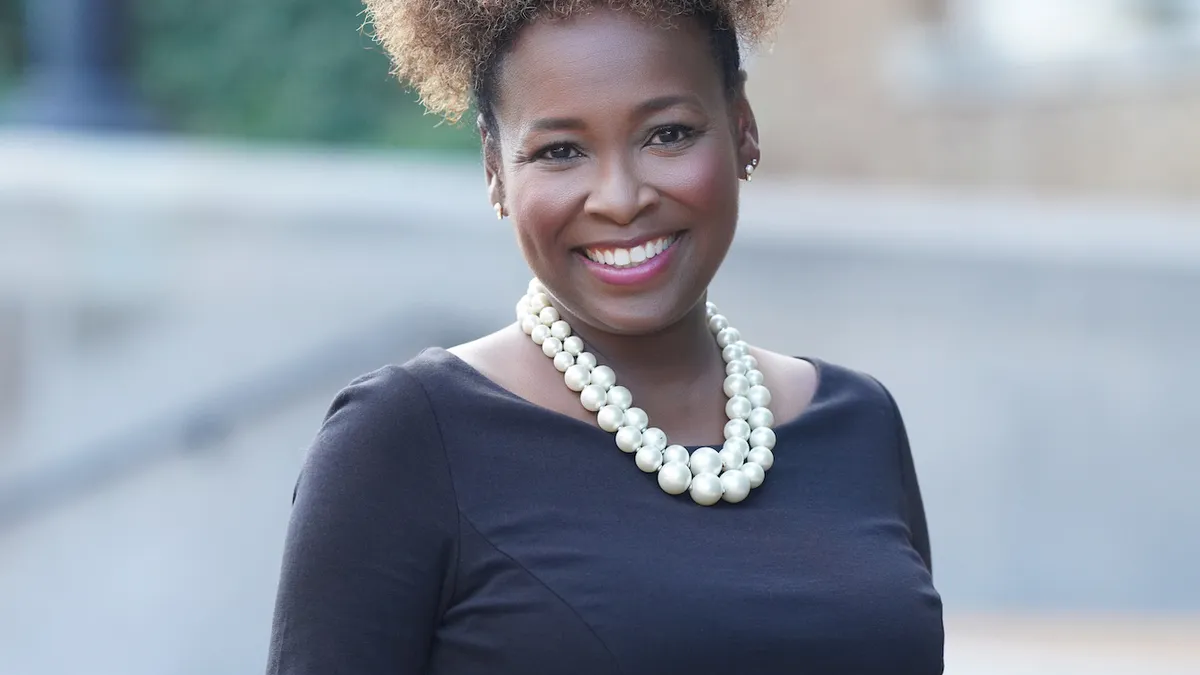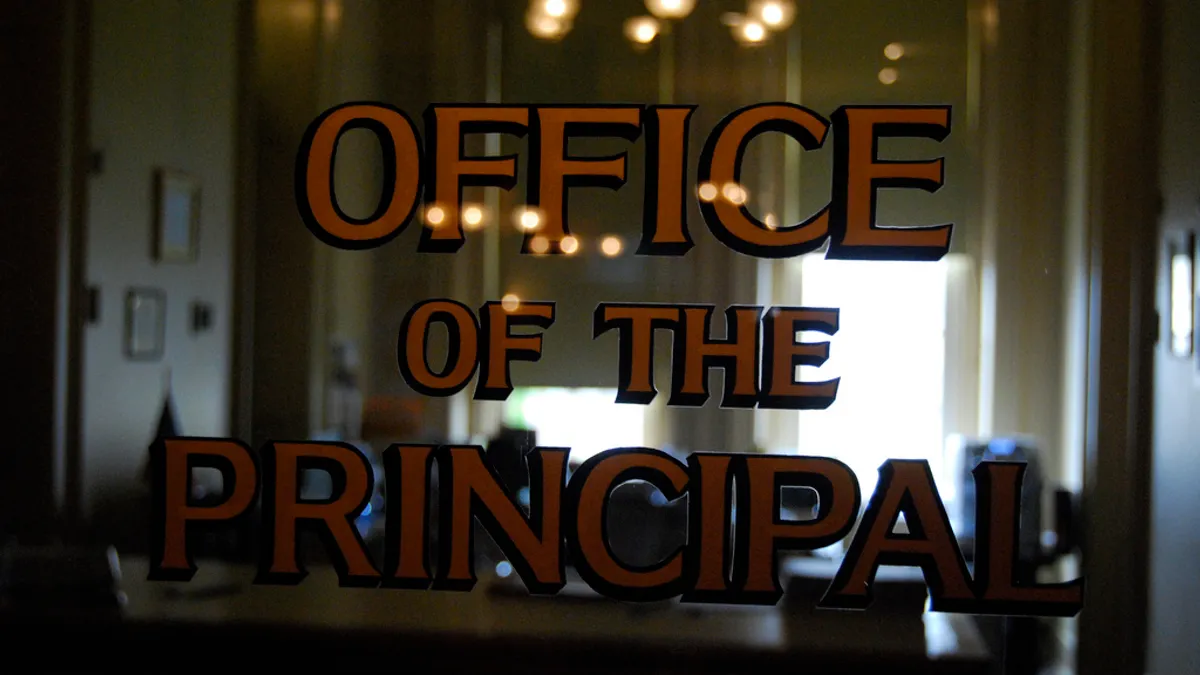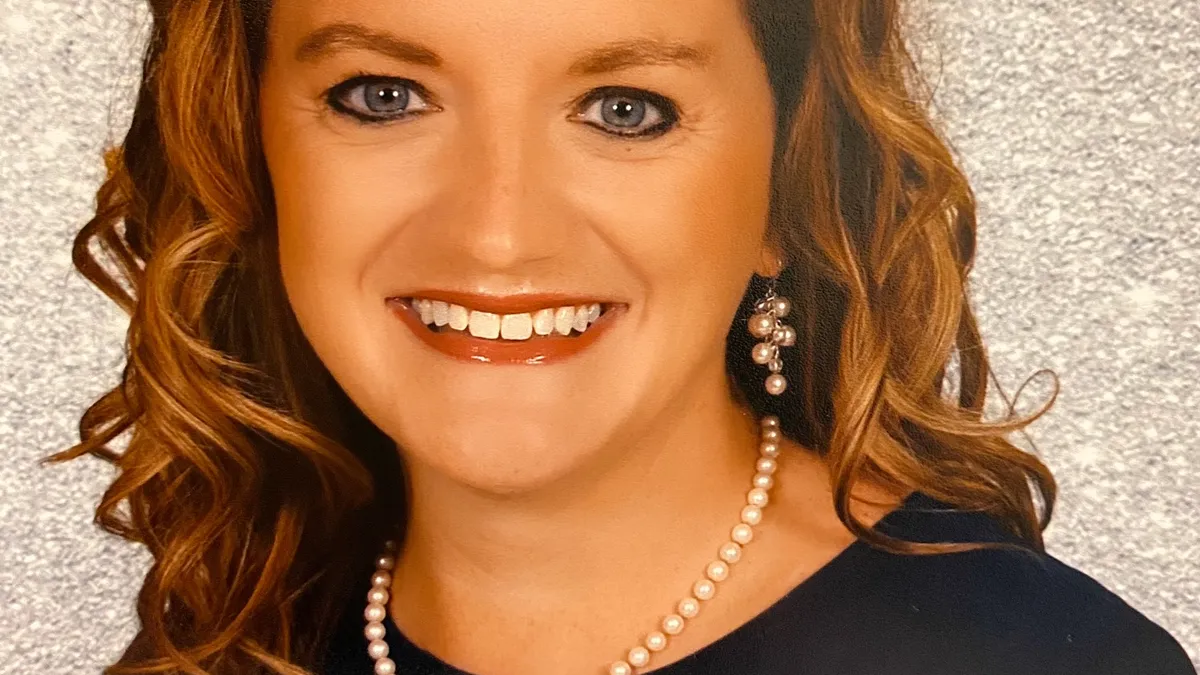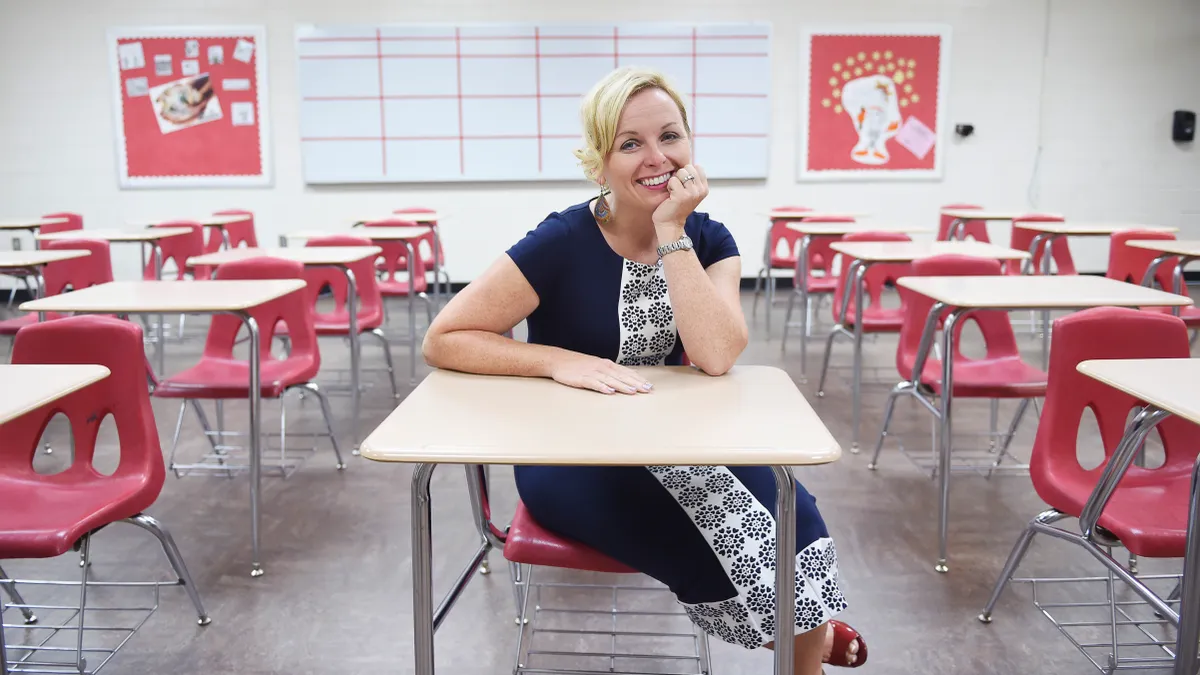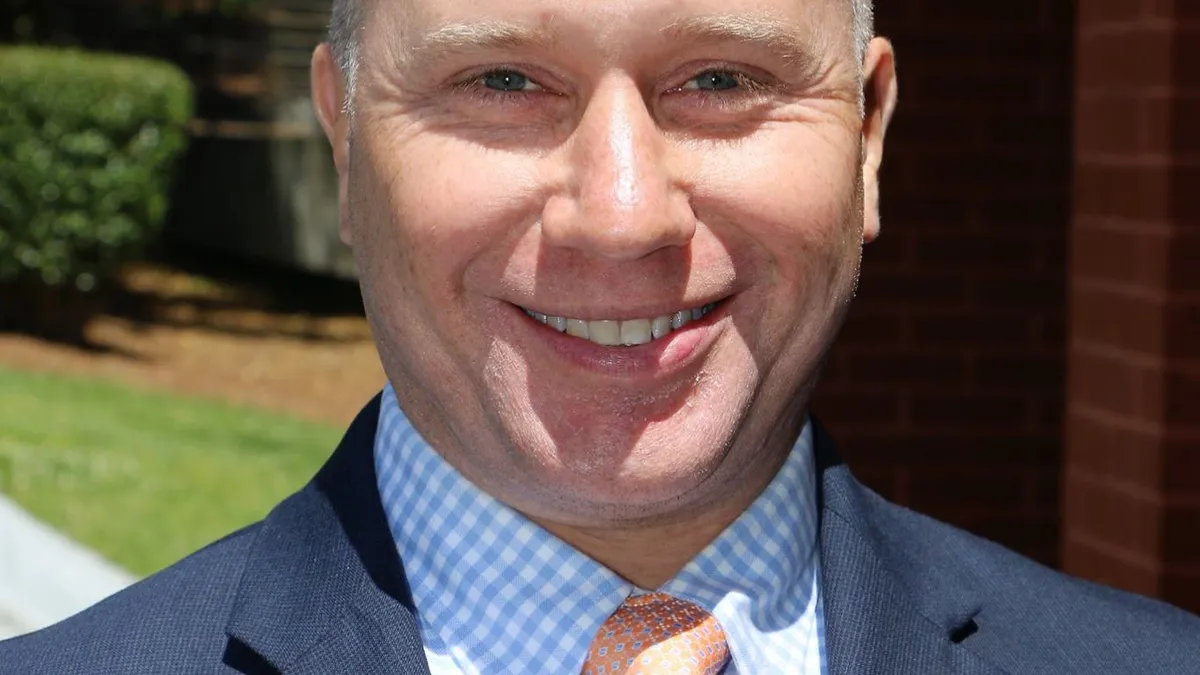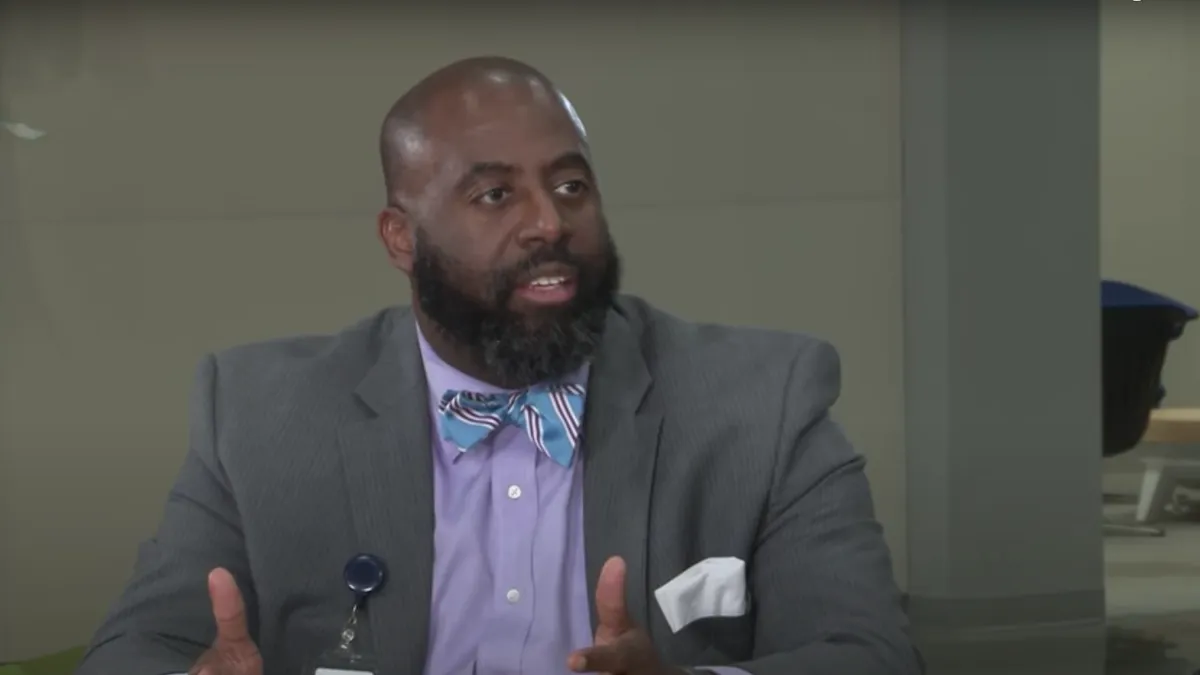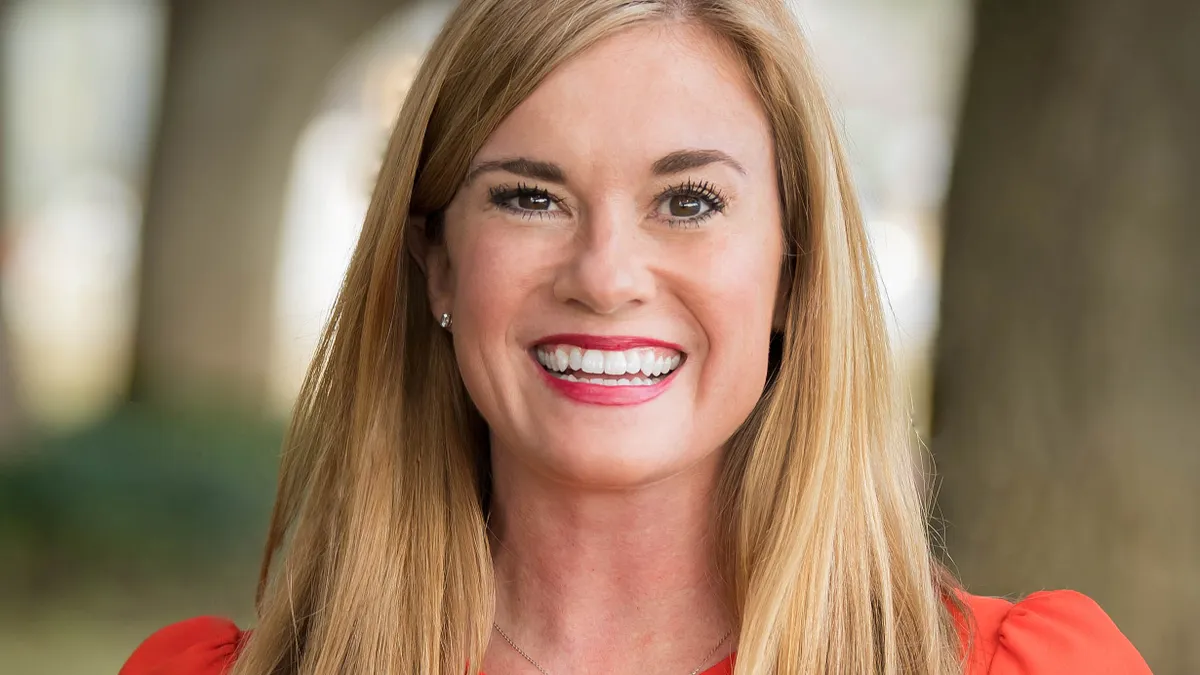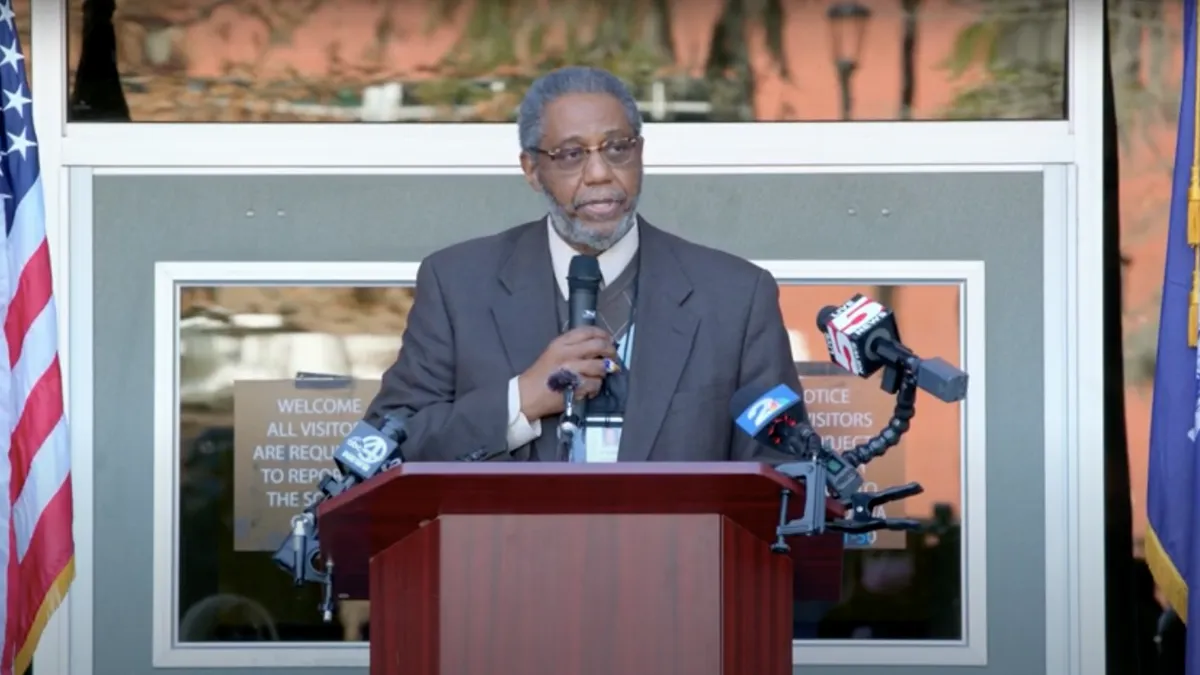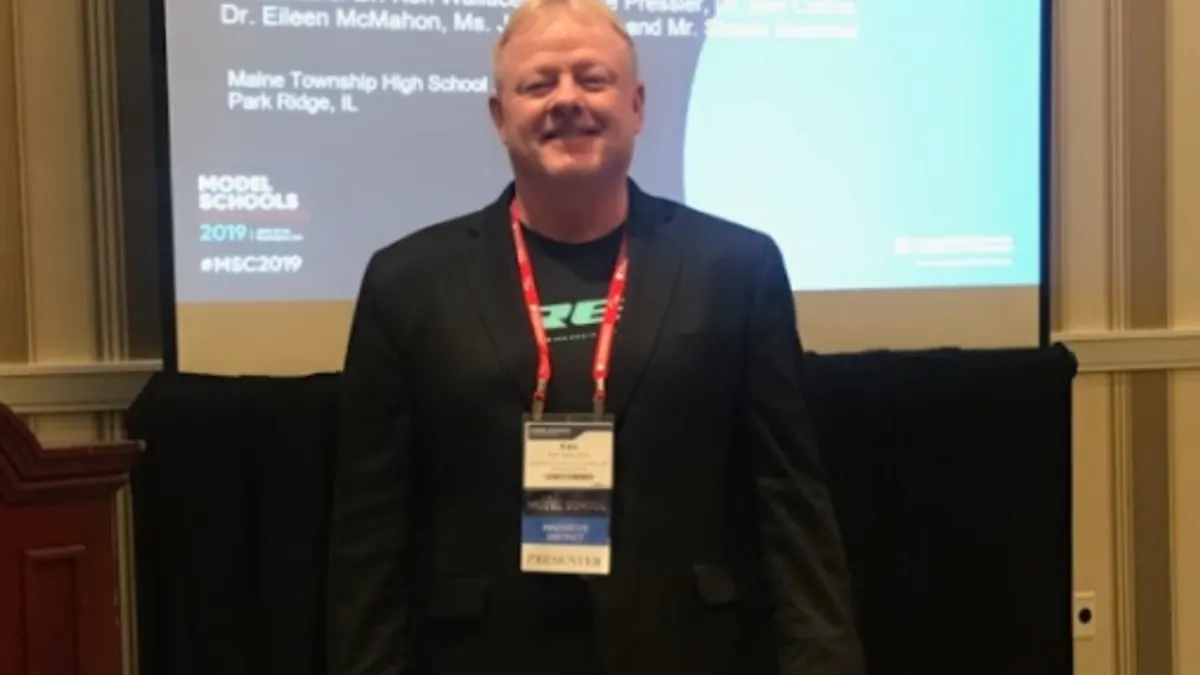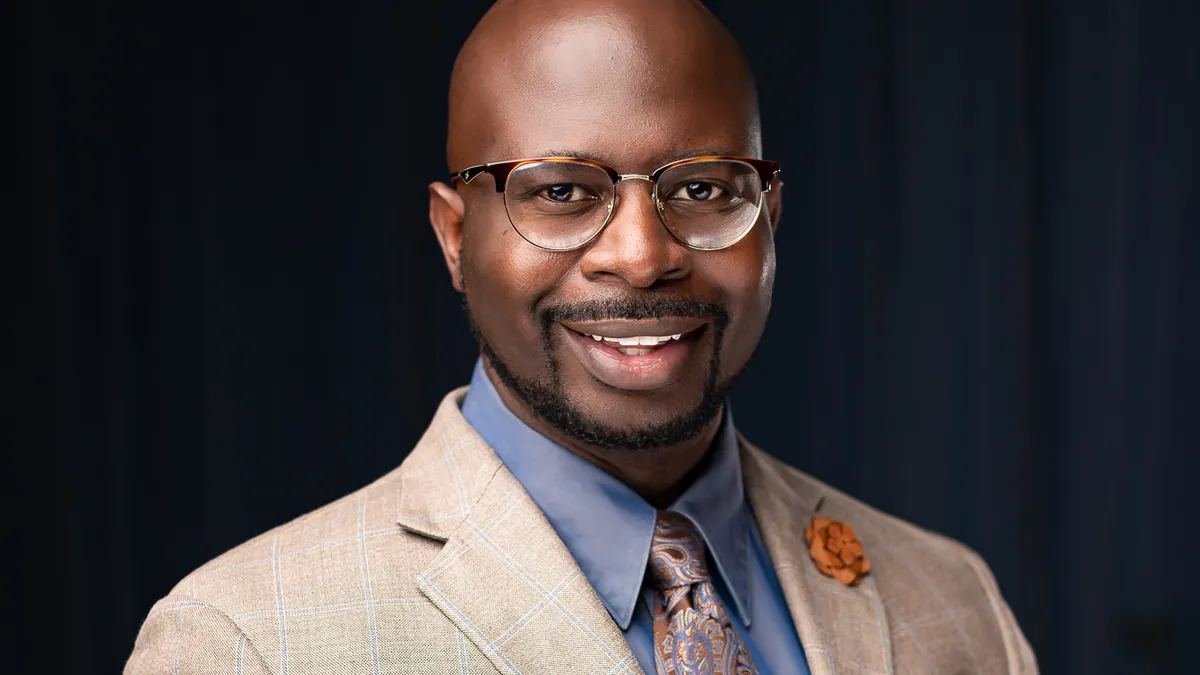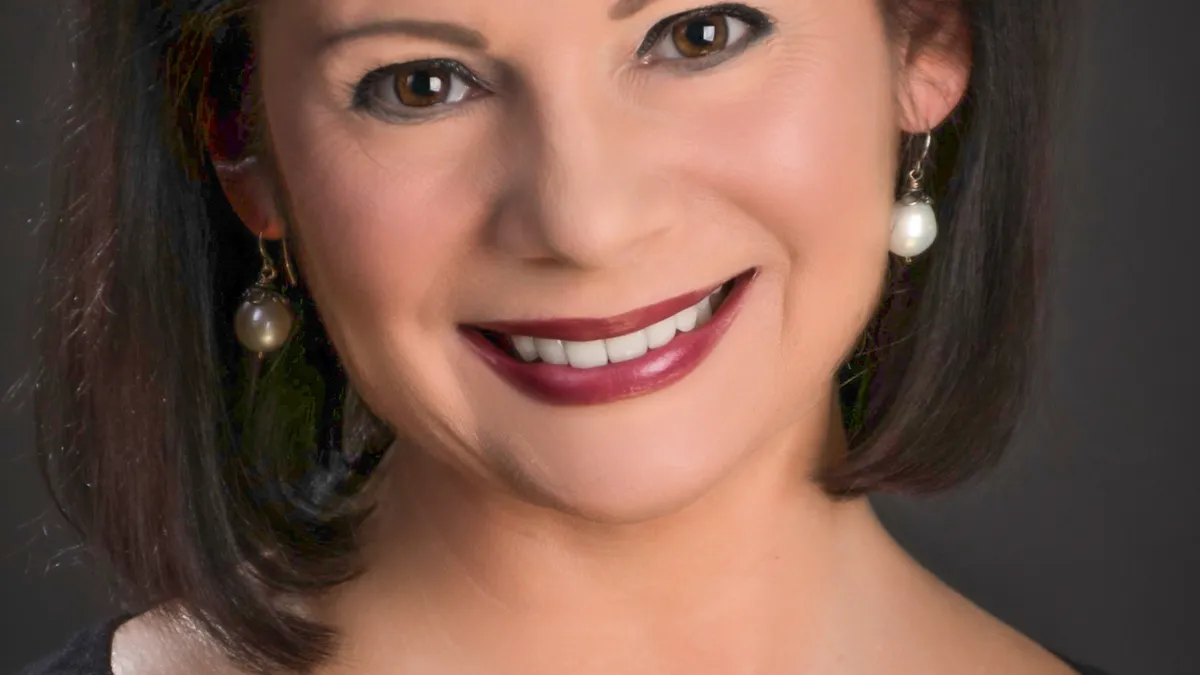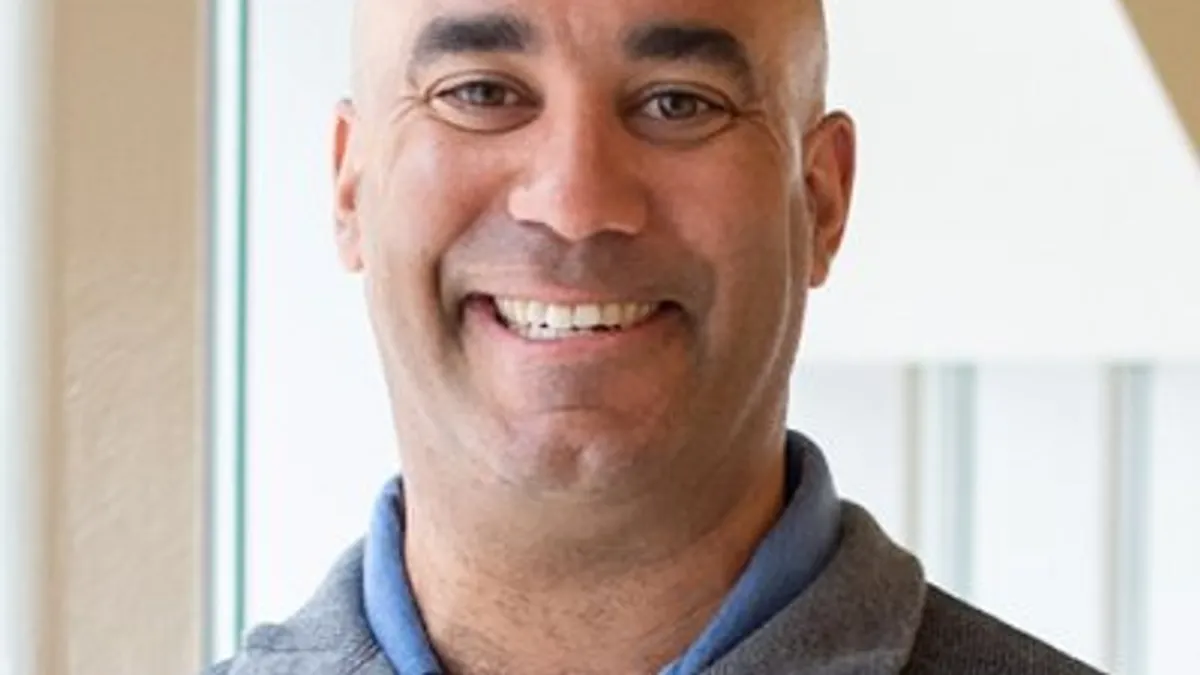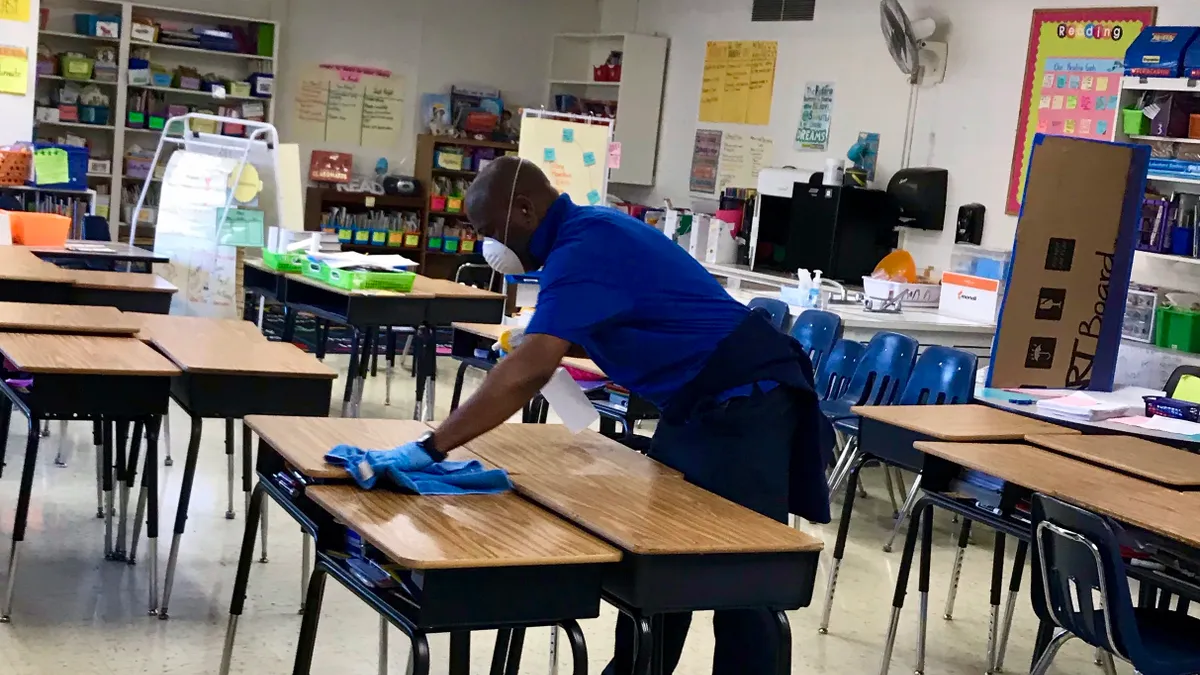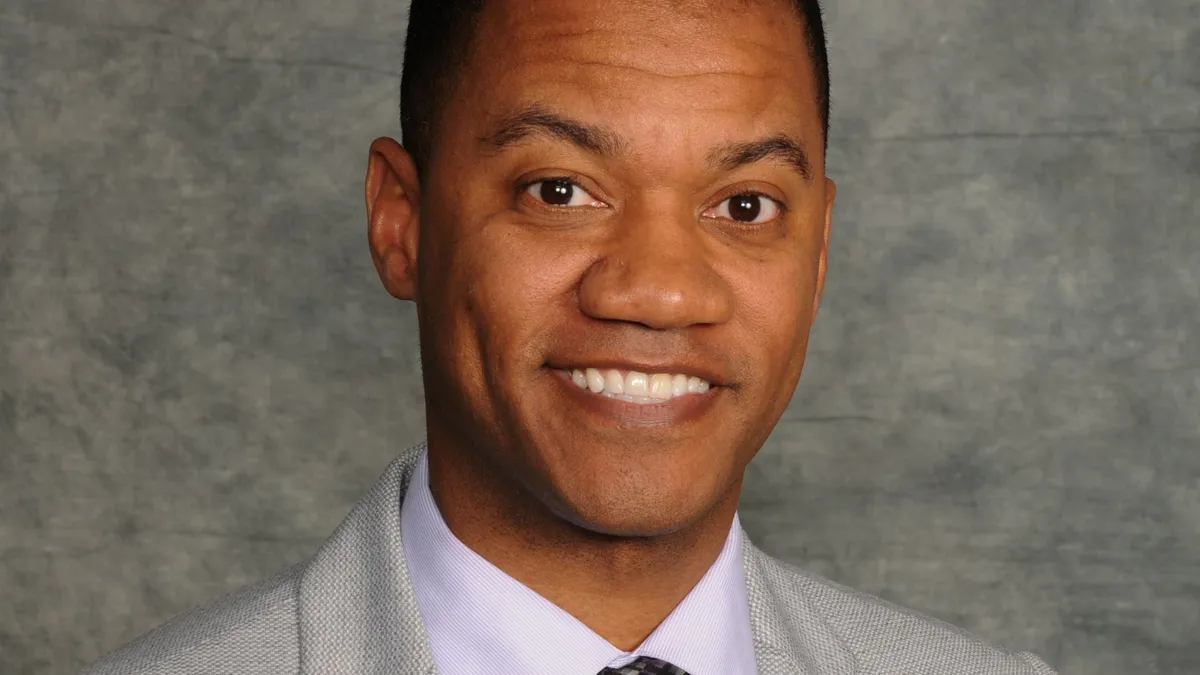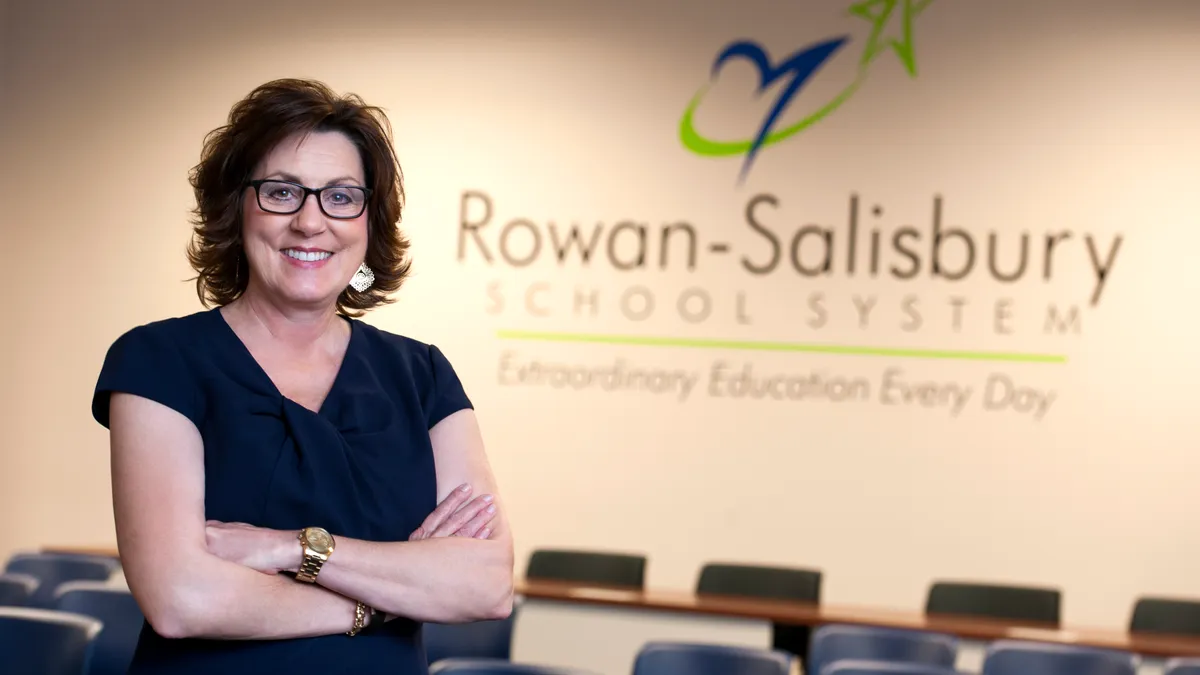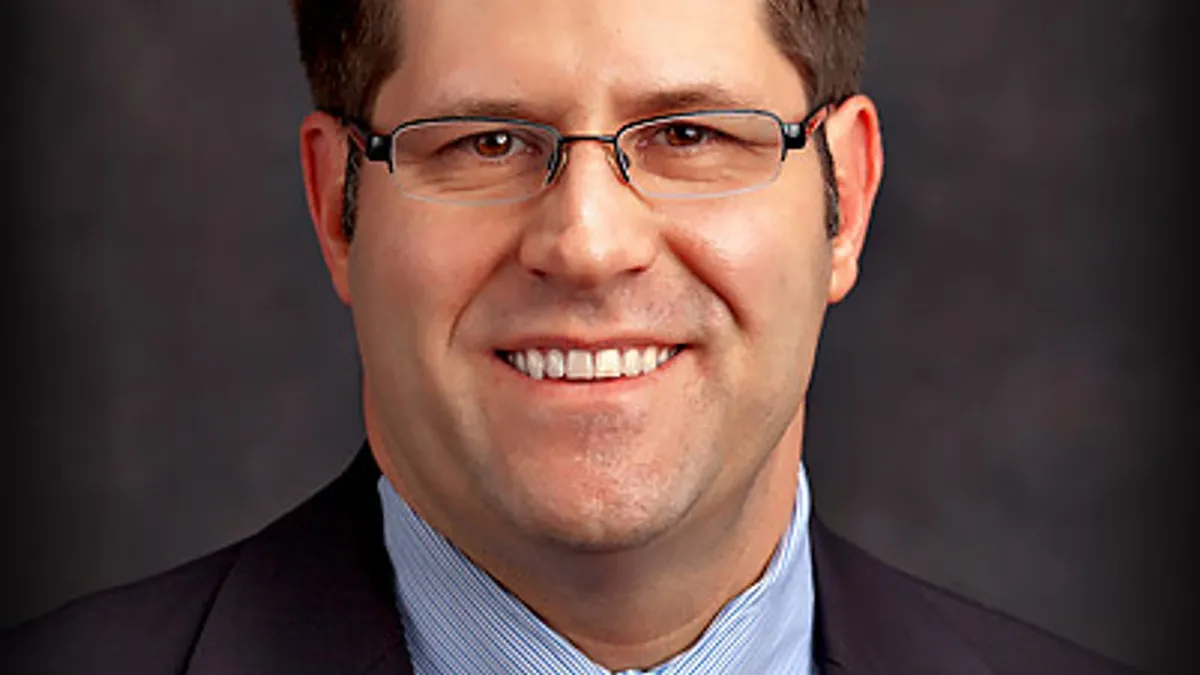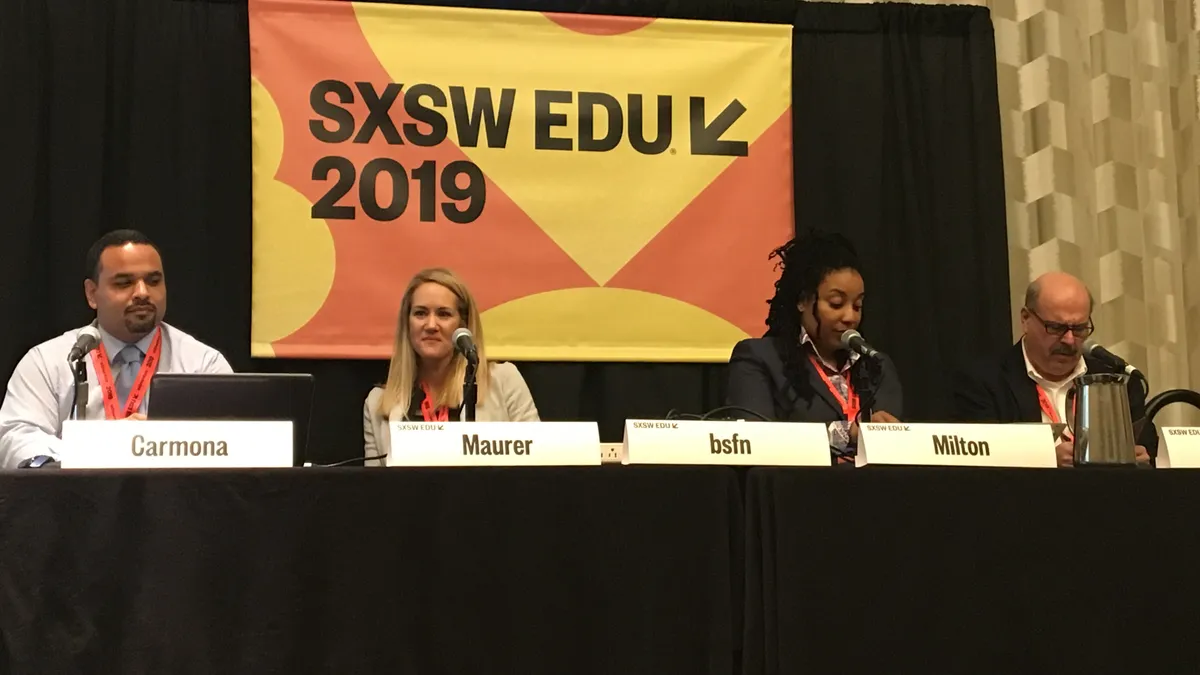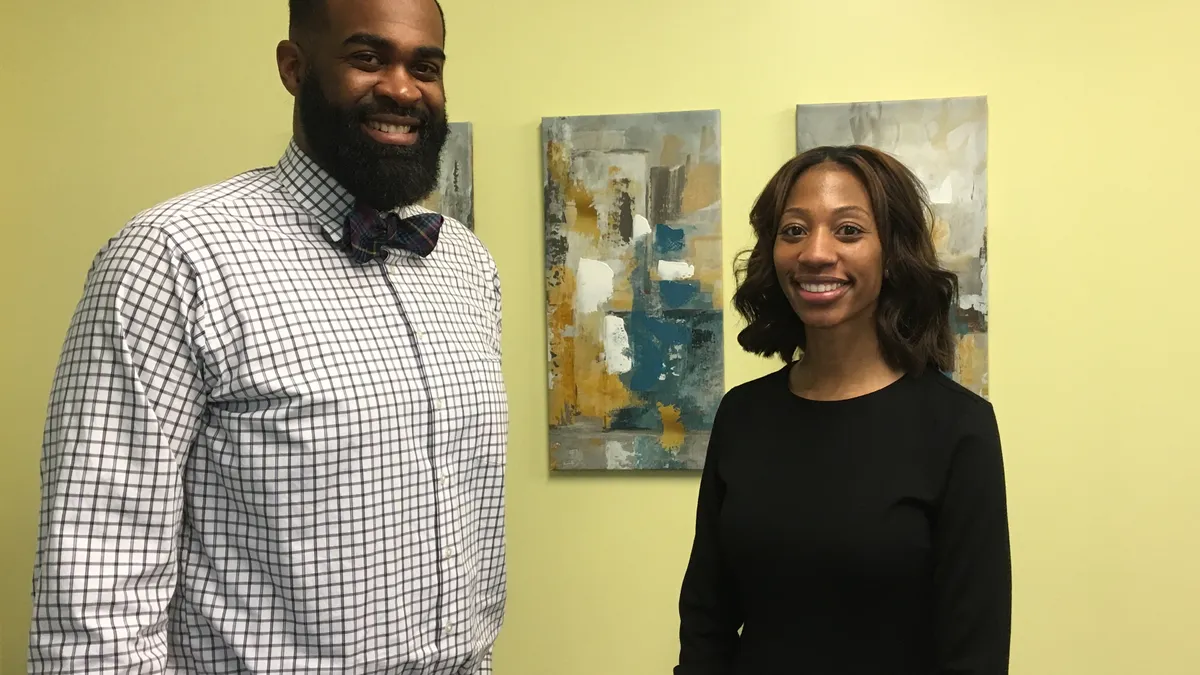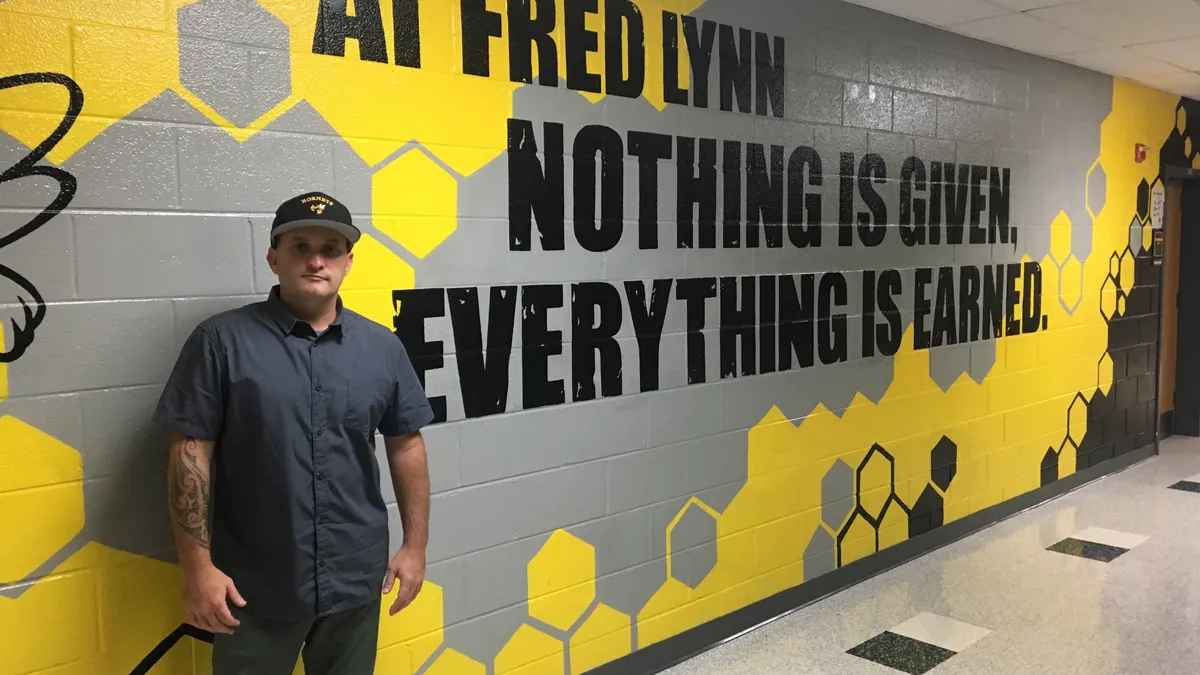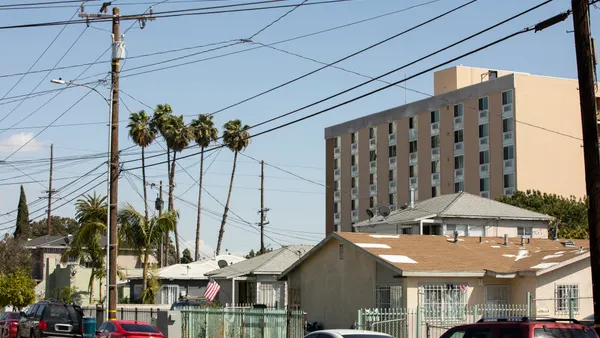Lessons In Leadership is an ongoing series in which K-12 principals and superintendents share their best practices and challenges overcome. For more installments, click here.
It's probably not surprising that Chicago Public Schools Chief Education Officer Janice Jackson, who leads the nation's third-largest school district, shares a similar homegrown career background to former New York City Schools Chancellor Carmen Fariña. Jackson attended the city's schools before becoming a teacher and working her way to the top leadership position, and she still lives in the predominantly African-American community of Bronzeville.
"It's not about just making decisions and then I go back somewhere and nobody sees me," she told Education Dive during a recent visit to CPS' headquarters in downtown Chicago. "I see the same people who I'm making decisions for in the grocery store, at the park, at the rec center. I think being a part of the community is really important and it holds you accountable in a way that maybe I wouldn't be as accountable if I didn't have to look at the people every day who I'm making decisions for."
But she also said the district's recent academic successes have been built on strong recruitment overall, with effective preparation for working in an urban school system making up for the lack of firsthand life experience in educators from beyond the city, as well as a focus on bringing strong principals into schools.
Jackson touched on the city's budget issues and school closures, the realities of its segregated neighborhoods, and its considerable improvement in recent years.
EDITOR'S NOTE: The following interview has been edited for brevity and clarity.
EDUCATION DIVE: I read recently that the district is actually one of the most improved in the nation. What are some of the factors that you think have contributed to that?
JANICE JACKSON: Well, there are quite a few. One thing I'll say just to preface this is that late last year in November, we actually invited the research community and other stakeholders to the table to unpack the performance that has been happening in CPS and talk about the drivers, talk about what we need to reinvest in and double down on. I say that to say I appreciate the role of research, and some of these things need to be researched and vetted before I can stand up and say, "We did these five things and it led to all of the improvements that we see in Chicago."
But there are a few things that I know we do really, really well, and I believe they've led to the changes. The first one is accountability. I know, depending on the year and what state you're in, accountability can be viewed as a good or a bad thing. I believe accountability — capital A, lowercase — is a good thing. I don't believe you can use it as the only means to motivate people and move them. But in CPS, we have created more of an accountable culture, and I think it has lead to a stronger school system.
Because I was educated in this system, I taught in this system, [and] started out as a principal before some of these things were implemented, I can tell you that the culture is much more accountable than it was when I was a student — definitely more than it was when I was a teacher or an early principal. I think that part has been clear.
We also use data to inform our decisions in a way that is — I won't say it's unique to other districts, but I do talk to other school superintendents, and CPS is much further along the path to using data to drive decision-making than I've seen in some other districts.
Now, it's not perfect. But I do believe we're much more accountable. I think that the partnership that we have with the Consortium on School Research, which is at University of Chicago, is a really important partnership because we have a full data sharing agreement with them. They produce data about our school system and reports about our school system on a regular basis. So, we had a choice, first of all, of whether or not to enter into an agreement like that, which we believed was the right thing to do. And it is the right thing to do and it's proven that.
But we also had a responsibility to know what's going on in our district and not just have an outside group telling us what's going on. It provides a good balance, because districts produce data and reports all the time. It's really important that you have third-party validators — like Sean Reardon at Stanford, like the University of Chicago — who are themselves looking at CPS separate and apart from what we're doing and coming up with similar conclusions about the progress.
The third thing I'll say is just principal autonomy. I don't think that can be highlighted enough. If you think about a large school system like Chicago, teacher development is extremely important to me. I know that teachers are the bedrock. They're the center of what happens every day in the classroom.
As a district, we can't hire 20,000 good teachers. But we can hire 650 high-quality principals, which is our goal, and we're always working toward that so that they are making good choices about teachers who will be allowed to teach children, and that they are creating conditions for teachers and children to be successful.
People come and they want to know about our principal program. We are not only focused on attracting good principals and placing them in the right places, but also retaining them, developing them while they're in that role.
The departure rate for our principals is 17%. To any person in a business community, that would sound crazy. But it's actually low for an urban school system, which is closer to 30%. It speaks to the fact that we not only made a commitment around having principals be the leaders and CEOs of their buildings and really investing in their leadership, but we have done a lot to retain and keep them in their roles.
A lot of districts are also dealing with the realities of state budget cuts and other funding concerns. How do you maintain the progress that's been made while, at the same time, you have to grapple with teacher layoffs or school closures or things of that nature?
JACKSON: Those are all separate things in the way that I see them. If I take just the budget crisis on first, that is something that we're seeing throughout the country. It's no secret that Illinois has its own battle. Luckily, I had the opportunity to work alongside the former CEO as he, along with other folks in the city, worked to get more state funding for our school system. We were successful to a certain degree. We're very appreciative of the additional resources that were given to us.
But we also know that Illinois, according to the Ed Trust data, is still 49th out of 50 for funding low-income students of need, and 50th out of 50 for just public financing of education, which is something we're not proud of as a state and we shouldn't allow. So, there's still a need for more resources in our schools, and we continue to fight for that. But we as a district had to do some things internally, as well, and I don't think all of them were bad things. I definitely think being more responsible with the resources that we have is something that came out of that.
In all of our schools, if you look at every dollar that's spent on education, it's much more clear where it's going, how it impacts student achievement, and how it leads to successful outcomes for students than maybe it was in the past. Maybe some of that came out of that crisis. That's how I like to think about it. But because we have had an infusion of cash and our situation is much more stable, we have been able to start to reinvest in our schools — opening new programs and expanding pre-K, which is a big initiative that we care deeply about here in Chicago. And starting new high school programs or building new high schools.
It's good to be on the other side of that, because for a while, we were really watching every single dollar, and things were tight. Nationally, it's an issue we have to address, both at the federal level but also at the state level. What are our values around funding public education, and do you believe adequate funding is enough or do you believe every student should have the kind of school that I know I want for my kids? My kids wouldn't go to a school where they didn't have access to art programs and world language programs. Why is that a choice that principals have to make?
My goal is to get further away from that model and make sure that, if you attend a public school, you can expect to see all of these different resources there. That's where we are on the funding piece. In Chicago in particular, enrollment is something that we are dealing with. We have lost about 30,000 students in the past five or 10 years. That's a lot of students. To have the same structure with fewer students is something that we continue to have to look at.
I know CPS had the largest school closings in history. That's something that that's a part of our history we always have to contend with. But I'm not one of those people that says that's all bad, or that keeping schools open that are underperforming and under-enrolled is good. You've got to meet somewhere in the middle, and the key is working with the communities in order to do that. That's the approach that I've been taking: much more of a community-by-community approach to look at what's happening in school communities and how we make decisions.
But in some cases, it's not just about the district making decisions. If parents have made a decision about the quality of a school or a school that they plan to attend, we have a responsibility to act on that. I've always said and I'll continue to say I make decisions based on education, not based on politics. I would never say that it's OK for a child to attend a school that I wouldn't send my kids to. I'm not going to stand up for something like that publicly. But if we work with the community, and they believe that that's something that they want to invest in, and people are rallied around to try to make it better, that's something that we can work with.
In situations where students go to the high school that best suits them, how does the district account for students who might not have the means to easily travel there?
JACKSON: Well, we've been trying to do a few things. First is prioritizing the importance of our neighborhood high schools. In a system of choice — which Chicago has, and I tell people it's probably the largest system of choice and always has been, at least as far back as I can remember — you also have to make sure that the neighborhood high school, which is the cornerstone of many communities, is a solid place.
When we have new investments and new programs, we try to prioritize our neighborhood high schools as much as possible because there are some schools you need to be in the community. There are no other options. There are schools that we need to be successful.
We've seen some success with that where we make an investment, like a Kenwood High School, Taft or other places where we put in an IB program or some kind of special program or a strong leader, and the community rallies around that school and you see enrollment go up by these magical numbers.
We've also seen cases where the investment is made, and in some cases, people have just decided that's not going to work for whatever reason. But as a district leader, I feel like it's important to always try to make sure that there's a high-quality neighborhood option in ever community, and that we're always working to try to better improve those schools. With that said, when I listen to the debate around school choice and things like that, the thing that I always remind people is that, in the past, school choice was something that was always considered normal for middle-class families and more affluent families.
As I sit here today, no one would ever question a decision about where I put my kids. They would just expect that if you are an educated person, a person of means, you're going to be discerning about what school your child attends. Why do poor and minority families have to go to a neighborhood school? I don't buy that argument. But I do believe that they should be able to go to the school closest to them, and it should be a high-quality option.
But I also believe if they choose to do something else, there's nothing wrong with that, and that's just a part of what the American dream is. You should be able to go after it, and you should be able to take any seat that you want if you believe that's what's going to help you be successful.
Most of our kids attend a neighborhood high school. I think the number is somewhere around 42%. Some of them don't attend their neighborhood high school, which is different, but they might go to a different school that they think is a higher-performing school or maybe it is higher-performing based on our school quality rating, and that's how they're making those choices.
Generally, one of the concerns that I hear the most around school choice models is that it potentially, in some districts, has created scenarios where the neighborhood schools end up segregated demographic-wise.
JACKSON: Most of our schools are segregated. What we've tried to do in some of those has been successful and others has not. I'm actually more interested in creating more open enrollment integrated schools in Chicago, because often, if it's an integrated school, it's selective or there's some kind of criteria that allows for different students to come from different backgrounds to enter into a school. So our magnet schools and selective enrollment schools are typically more integrated than neighborhood schools.
Chicago is a very segregated place. I think it's at the top of the list or No. 2. I'm much more concerned with the quality of education in there. I think if you have a neighborhood school that is not as integrated, but it's providing kids with all the same options that they would get if they were attending a different school, then I'm OK with that. But I think what we've seen, and this isn't just a phenomenon in Chicago, is that sometimes when you see that segregation, you don't see the same resources.
I think integration is extremely important and it's something we always strive for. I really want us to have policies that go beyond selective enrollment and magnet in order to integrate our schools, but that's a hard thing to do because you have to really appeal to the hearts and minds of individuals in order to do that.









